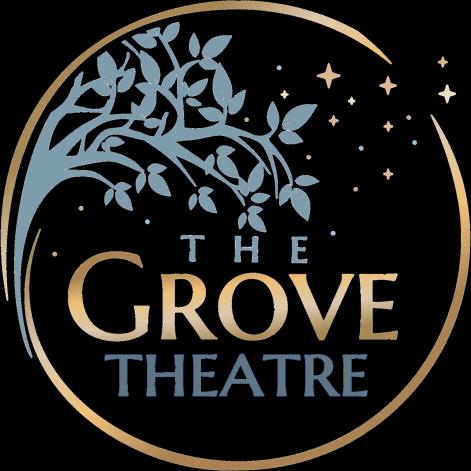Building trust on the streets through police outreach teams

Small town, big dreams How do we save our sense of community?
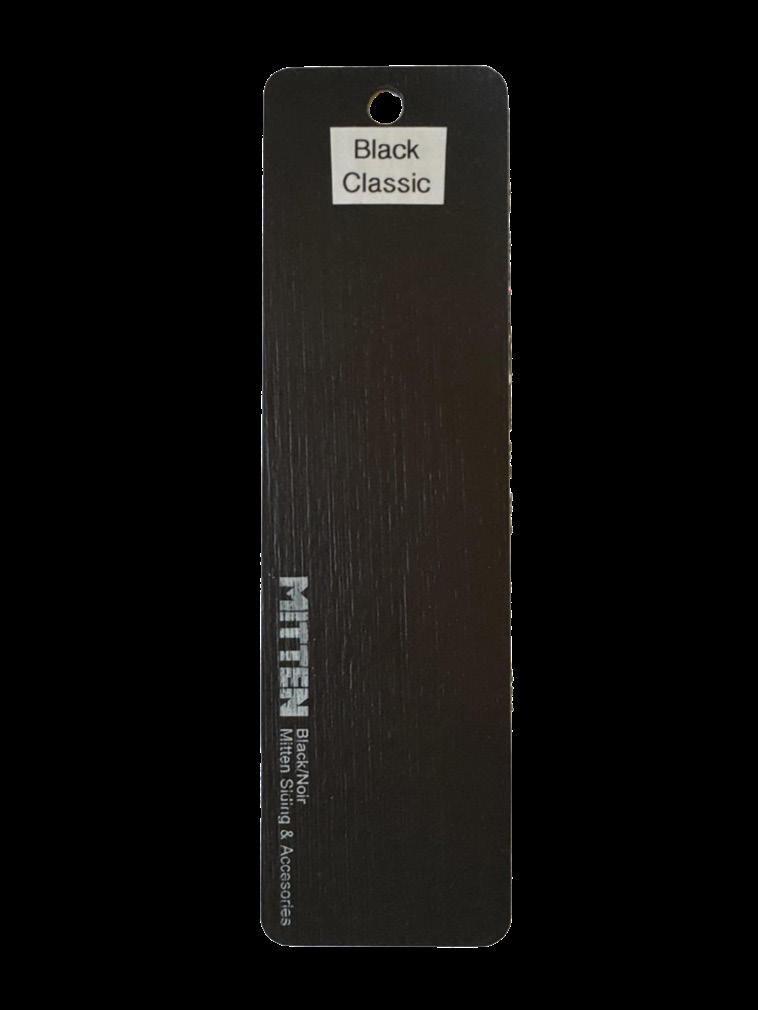



Building trust on the streets through police outreach teams

Small town, big dreams How do we save our sense of community?



At Lindsay Ear Clinic, our goal is to provide comprehensive audiological assessments. From the results of these assessments, we will educate, and inform our patients so they can make an informed decision about their hearing needs.
Your story is our priority, we’re here for you!




Choose from one of our three locations in Lindsay, Bobcaygeon or Bancroft
One of our Audiologists will run you through a series of tests and then discuss options to help you return to better hearing.
CHOOSE YOUR HEARING AID
We’re confident we can find the perfect device to suit your needs.
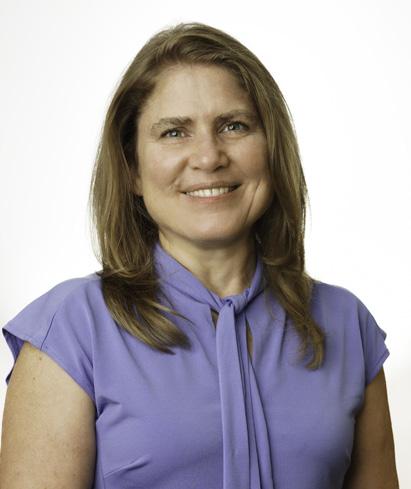






Cara Baycroft ADVERTISING SALES


SALES

Please send editorial inquiries to Roderick Benns at roderick@lindsayadvocate.ca or 705-341-1496.
Please send ad inquiries to Darren Hoiting at 705-991-3188 or darrenhoiting@outlook.com, or to Cara Baycroft at 905-431-4638 lindsayadvocate.ca • @lindsay.advocate


Stafford, right, part of the street outreach team with Kawartha Lakes Police Service. Photo: Robyn Best
The Advocate’s Robyn Best spends a day with the Kawartha Lakes Police Outreach teams.
What is the real definition of a small town and does population growth mean the end of it?
Lindsay’s Brian Pickett has worked on some of the biggest kids’ shows in the world.
our mission
Fireside Publishing House is the premier print media company in Kawartha Lakes through its family of magazines and all-local weekly newspaper. We believe that community-based media can bring people together and change lives for the better through the power of storytelling, reflecting local culture, and creating informed and engaged citizens. Our commitment is to deliver high-quality and relevant content that reflects the diverse voices and experiences of our communities. We believe in the transformative power of local media to inspire, educate, and empower.

As I look at the cover of the July issue of the Advocate I think it appropriate that I address my shock and disappointment when I drove through downtown Lindsay the morning of July 1. At a time in our history when our sovereignty is being challenged by our neighbour to the south one would think every community in the country would be proudly displaying our great flag.
Alas, it seems our shiny new light standards are not equipped with flag brackets. I could go on about the last time something like this happened, when it was discovered that we had brackets and poles but no flags. I reached out to a local business leader who anonymously funded the flag. But that’s ancient history. My hope would be that this situation would be quickly remedied as I have contacted my ward councillor.
— Wally Nugent, Lindsay
Feelings of patriotism are readily stoked during times of perceived crisis by the repetitive use of well-crafted slogans. The popular ‘elbows up’ slogan was featured in an article by Geoff Coleman in last month’s issue of the Advocate. It dovetails nicely with the ‘Canada First’ slogan heard during and after this year’s federal election. It was likely contrived to encourage Canadians to stand strong in the face of Donald Trump’s ubiquitous MAGA slogan which stokes ‘America First’ patriotism in all 50 U.S. states. Sadly, I hear few elbows up champions discussing the many specific economic and national security reasons behind the MAGA cause that has gained such widespread support.
When Trump suggested Canada as the “51st state,” many Canadians took umbrage and rallied behind “elbows up”. It took me by surprise that just a few casual statements from one man, Donald Trump, could be magnified so profoundly by political pundits and media outlets to bring it to such a fevered pitch across this country. Worse, federal political candidates leveraged it to win seats. Was I the only one feeling manipulated by that barrage of propaganda?

Thank you, Roderick Benns, for “Ford is right to bring Macdonald back into the light,” (July Advocate.) This column is a light in the darkness of narrowmindedness and shortsightedness. At my age, 80, I hope I’ve learned to view life with a wider lens and temper opinion with knowledge. I am blessed to have been born in this country where all sides may be heard and all lives matter.
—
Catherine Dunk, Kawartha Lakes
Emotions supersede facts and reason too often these days. Yes, slogans can stir emotions, but wouldn’t it be nice if the energy of those emotions would morph into cooler heads which might inspire them to more deeply consider the root causes behind the need and success of these slogans in the first place.
— Gene Balfour, Fenelon Falls
MAGA is indeed rooted in deep economic inequality. We have certainly written about inequality regularly, since the Advocate was founded in 2017. However, knowing the root cause of something should not be construed as a hall pass for a misogynistic, bigoted, authoritarian.
— Roderick Benns, publisher
In Cool Tips for a Hot Planet (“For Peat’s Sake,” July Advocate), writer Ginny Colling states that, to speed up the mining process, projects could be exempt from provincial bylaws and regulations, including environmental regulations. This should be deeply concerning. If these laws are truly too restrictive or outdated, the logical and democratic solution is to amend or repeal them, not bypass them entirely. Special exemptions send the wrong message: environmental protections apply only when convenient. This undermines public trust and creates the perception that rules can be suspended to serve short-term interests. It also invites inevitable protests and legal challenges, delaying the very projects the government claims to accelerate. Ontario needs responsible resource development, but it must occur within a transparent, accountable, framework. If existing regulations are flawed, fix them through open debate and public consultation. Do not erode confidence in the rule of law by carving out exceptions.
— Carl Sweetman, Lindsay
While sipping coffee at my regular downtown Lindsay hangout, I read Roderick Benns’ column regarding Doug Ford’s plan to unbox the statue of John A. Macdonald. (Benns’ Belief, July Advocate.)
Like the publisher, I am not a big fan of some decisions made by the Ford government. Some 20 years ago, I lived in Keswick, steps away from Cook’s Bay, where the Holland River flows into Lake Simcoe. As an outdoor enthusiast, I enjoyed exploring the complex ecosystem of wetland plants and animals that thrive in this watershed. So when the 16 km 4-lane Bradford Bypass that will link Highways 400 and 404 received Royal Assent in 2024, I was not happy. Farming has been practiced on these rich soils well before the time my Scottish ancestors, along with many other European settlers, crossed the Atlantic.
But I get it. History is complicated, involving many conflicting interests. It’s also not black and white. Laws and practices introduced in the late 1800s are now being challenged. But they still happened. Rather than hiding our mistakes, one hopes that misguided choices – like the ones Macdonald made – can be recognized as such, so that better choices can be made as we move into the future.
— Mike Bruce, Lindsay
The article in the July Advocate by Dr. Joan Dafoe on the significant harm caused by the Safer Drug Supply Program is disturbing. Readers might be informed as to how our regulators deal with allegations of practitioner misconduct; particularly, in this case, physicians and pharmacists. (I consult for several colleges and am familiar with disciplinary protocols.)
Both pharmacy and medicine have explicit standards of practice regarding opioid prescribing and dispensing. Should a practitioner, even slightly, deviate from the standards, they risk an allegation of violating them, and are then subject to an investigation and possible findings of professional misconduct.
All licensing and regulatory colleges uphold a mandate to protect the public. The colleges make it both easy and simple to lodge a complaint on their websites. Complaints may arise from various parties. A health care professional, concerned about patient and public well being, may lodge such a complaint. The colleges particularly rely on patients and their family members to report concerns on practitioner behaviours. The colleges then investigate and report proceedings on their websites; this being part of how the professions model transparency and accountability.
Dr. Dafoe’s discussion on the New Dawn Medical service speaks to drug diversion. New Dawn’s website features drug addiction but includes chronic pain. The data on opioid dependence reports the primary reason someone becomes addicted to an illicit drug follows an initial opioid prescription from a physician. The data is also unequivocal that most patients are being treated for back pain. Clinical guidelines state opioids should never be prescribed for such, as they don’t work. Many other modalities and treatment approaches do.
I recommend anyone concerned about a family member who is unwell, in whole or in part by opioid use, gather information on the source(s) of the opioid and use the regulators’ websites to communicate with the colleges of Physicians and Surgeons and Pharmacy. (Anonymous complaints are not considered.) While this reporting will not solve the bigger societal opioid problem, it does reinforce that health care practitioners are to fully comply with their licensing requirements.
— F. Stuart Kinsinger DC, MA, Fenelon Falls
The Advocate welcomes your letters. We do not publish anonymous letters unless it’s a matter of public importance and/or someone risks harm by writing us. We publish under strict guidelines & only if we can verify the person’s identity. Keep your letters to 200 words or less. Simply email roderick@lindsayadvocate.ca.
Won’t you join our supporter’s list?
The Advocate and Kawartha Lakes Weekly are your 100% local print media choices based in Kawartha Lakes. Visit our website and choose Support Us, or contact 705-341-1496 or roderick@ lindsayadvocate.ca. We thank the following people for their support:
Al Kingdon, Anne Melanson, April Scott, Audrey Burrows, Barb Taylor, Bill & Heather Peter, Bob & Carol Barkwell, Bruce & Debbie Peck, Cam Finley, Carol Bryans, Carol & Brian Kelsey, Catherine Hennings, Christine Wilson, Colleen Newson, Cordula Winkelaar, D Ann Ostafichuk, Dale Urekar, David & Margaret Robertson, David Holloway, David MacMillan, Deborah Smith, Doreen Amos, Don Sangster, Donna Gushue & Jim Buchanan, Drew Davison, Edith Wood, Edna Calhoun, Elaine Heyes, Elizabeth Anne Patterson, Elke Danziger, Ellen Roberts, Gail Motzok, Garth & Marian Mackay, George Meyer, Glenda Morris, Grace King, Hannah Marnoch, Heather Muir, Hilary Grice, Jack Kyle, Jane Porter, Jane Walling, Janet Smith, Jean Wood, Jeremy Kraemer, Jim Buchanan, Joan Shippel, Joanne Young, John & Elizabeth Gundy, John & Pauline Hunter, Joyce Dunning, Kevlyn Given, Laurie Jones, Lauren Drew, Lee Steeves, Leslie King, Linda Friend, Lorna Green, Lynda Palmer, Marci Stainton, Margaret Anthony, Maria Bennett, Marie Geelen, Marie-France Leclerc, Marnie Nelles, Maureen Kalmykow, Maurice & Marie Jackson, Mehran Qaaboos, Mike & Cathy Puffer, Nanci Byer, Neil Campbell, Nelson Gingrich, Nora Steffler, Norma Downes, Norman & Molly FeldmanSwan, Patricia Apac, Pamela Burtt, Paul Skipworth, Peter & Kathy Anderson, Peter & Sandra MacArthur, Ray & Lorna Smith, Ron & Claudie Chartrand, Ross & Susan Beattie, Sandra Scott, Sharon Tracy, Shirley Harnden, Susan Ferguson, Susan Gleeson, Susan Stitt, Tegan Osmond, Vickie Schuett, Viona Smith, Wanda Percival, Wayne & Cathy Alldred, Wayne Alldred, William Steffler, Wayne & Wendy Brumwell, Zita Devan







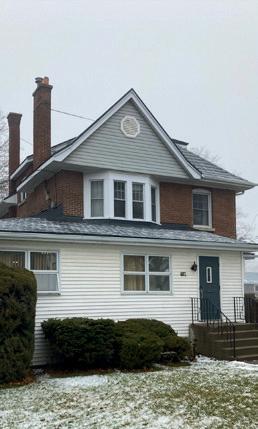

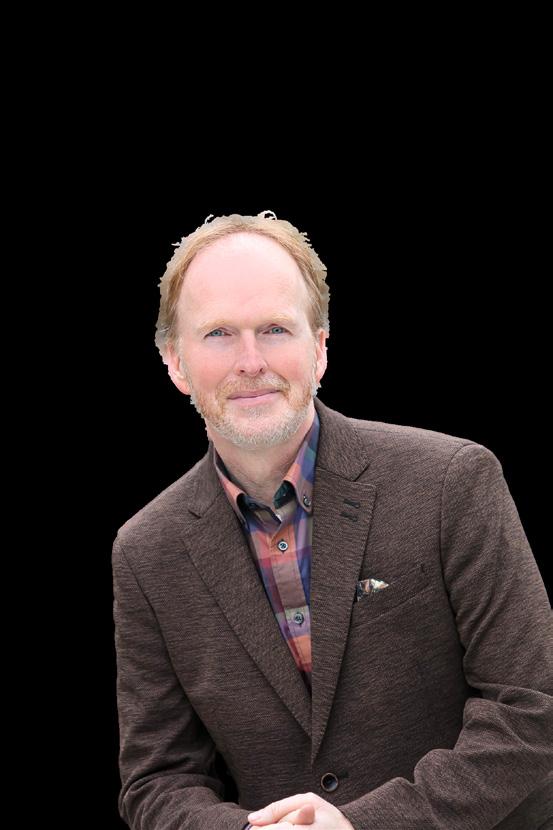
By Roderick Benns Publisher
The Tale of Johnny is a twist on the classic Aesop fable – and an improvement.
The Town Mouse
and the Country Mouse, the town mouse comes across as a bit condescending, which inevitably invites the reader to appreciate the country mouse and her ‘simple life,’ rather than the hustle and bustle of town life.
Potter’s version in 1918 is simply better, with each mouse unnerved by the other’s world.
One of the darkest days of my young life was when we left Lindsay to live rurally. Well, if one can call it that –Pickerel Point Road near Snug Harbour. I had to leave my town friends behind, even though technically they were only nine kilometres away. For a 13-year-old, we may as well have moved to Yellowknife. There was no library to spend time at. There were no paved streets. It was like town, in that we were surrounded by houses, but even worse because there were none of a town’s amenities. Trickery most foul.
Things I don’t like about the country: no cafes or stores; dusty gravel; having a well and a septic tank; sus internet; too many bugs; no library; no restaurants; no hospital or schools; no theatre of any kind; the bugs; poor water pressure; bugs.
Of course, town life can be annoying, too. Loud cars. Disruptive people. Traffic. In everything there is a trade-off. In our cover story this month by Ian McKechnie, he writes of the future now before Kawartha Lakes, but especially Lindsay and to a lesser extent Bobcaygeon and Fenelon Falls. For years we have watched other municipalities grow all around (or near) the Greater Toronto Area. The Milton’s, the Durham Regions, the Peterborough’s
and the Markham’s. Now it’s our turn – and there’s no turning back. The only question that remains is the ‘how.’ How will we grow? What will it look like? And just as importantly, what are the aspects of a small-town life that we would absolutely miss if they were taken away?
For years we have watched other municipalities grow all around (or near) the Greater Toronto Area. The Milton’s, the Durham Regions, the Peterborough’s and the Markham’s. Now it’s our turn – and there’s no turning back.
From an aesthetic perspective, I can’t think of anything more important than preserving the look and feel of our downtowns. This is imperative to retain our unique identity. Think about your own travels for a moment. Does anyone ever drive into a new town for the very first time to look for their corporate stores? Do we ask someone where to find the commercial strip? Of course not. We want to see the heart of the community – we want to drive or walk about their downtown. That’s where identity lies. And that’s why it’s a line in the sand for our communities that we must preserve.
I get it. Not everyone is a town mouse like me. And I would hasten to add I prefer small towns over big cities, so I, too, am looking for balanced growth. What about you? Tell me what you are both worried and excited about during this time of great change for our communities. Email me at roderick@lindsayadvocate.ca.
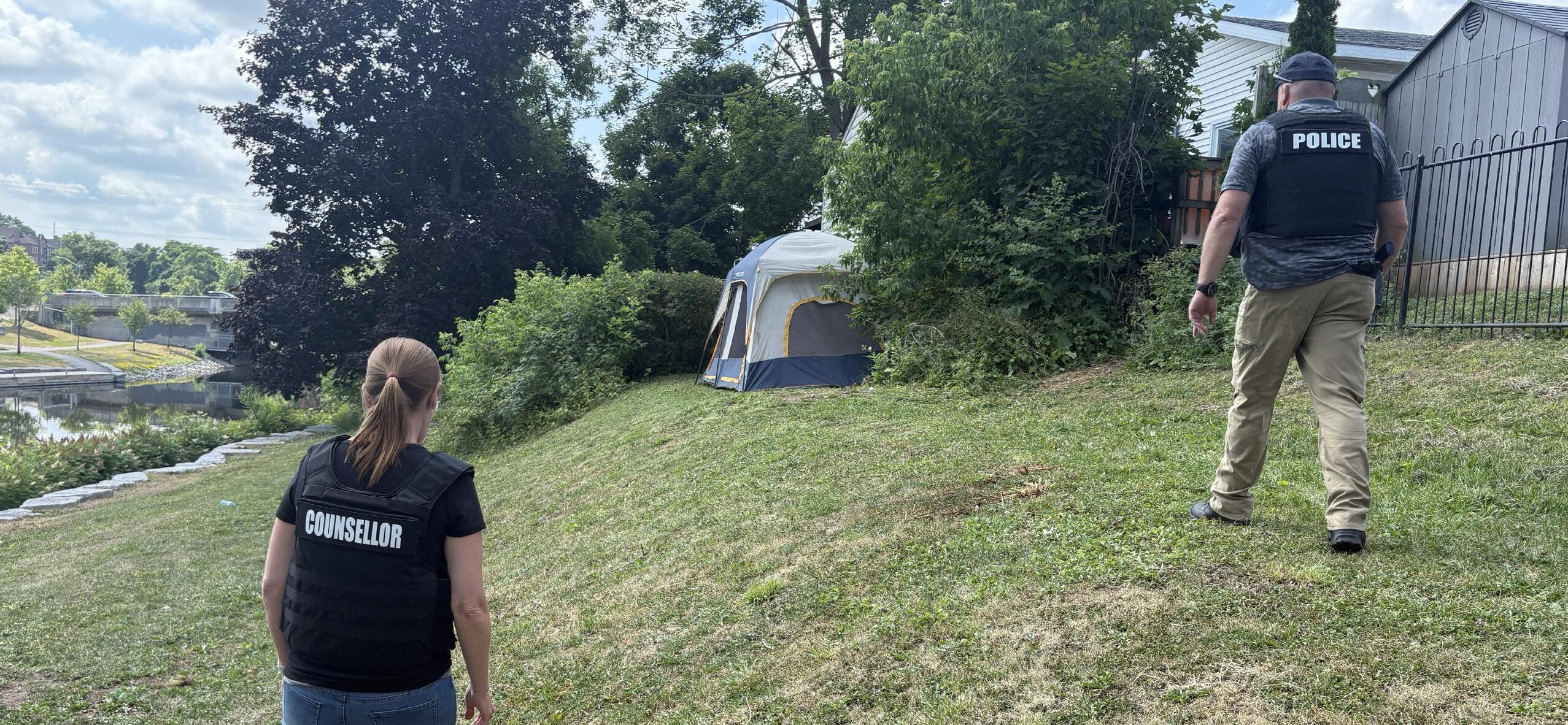

By Robyn Best
With unmarked cars and open conversations, officers and health workers meet vulnerable residents where they are, offering resources, reducing stigma, and building trust one connection at a time. The Advocate’s Robyn Best spent a day with the local police force, documenting their work.
It’s common, especially online, to discuss tents in our city parks and people who make us uncomfortable hanging around in our downtown core. Like many, maybe you’ve even judged them.
However, the people in these situations haven’t decided to be where they
are; a variety of circumstances have led them there, according to local police. They are representative of a larger issue happening in Kawartha Lakes and across Canada, one that Kawartha Lakes Police Service is trying to combat.
Through outreach teams, the KLPS is trying to build trust with residents facing addiction and mental health challenges. By pairing officers with health professionals, their substance abuse and mental health units not only offer direct support to those in crisis, but they also work to educate the public and reduce stigma surrounding vulnerable communities.
Using unmarked cars, the two teams have similar objectives. The substance abuse team drives around to places they know people in need tend to go, offering them food, water, hygienic products, as well as offering several resources they can take advantage of. This team consists of an officer and an addictions counsellor. In this case, it’s Constable Mike Stratford and Robyn Mather. I set out with them one morning in the middle of July’s heat wave to experience what community outreach is like from their perspective.
Much of the job is driving around, given the itinerant lifestyle of the people they are trying to help. They stop at sev-
eral parks and along town streets – wherever they believe assistance is needed. When they approach a tent, it’s clearly done with empathy, given their earlier conversations with me. They visit occupants, introduce themselves by their first names, and, perhaps most importantly, make direct eye contact with everyone they meet. Essentially, as they explained, they’re allowing people who are in very vulnerable positions to feel like a person.
The first visit brought the team to a tent, tucked away in a corner in an attempt to stay away from prying eyes, to talk with a man who had recently been put out on the streets. After suffering a neck injury at work, he had started using drugs for pain control. A white bandage on his left arm indicated a newer injury he had recently obtained, one that without proper treatment could lead to a serious infection.
“It was a good first reaction,” Stratford said. “He didn’t run, so he’s looking for help.” They let him know about services available like A Place Called Home and 111 William Street North, which often allow drop-ins. Now the next step is to let other agencies in the city be aware of him so they can get him as much help as needed.
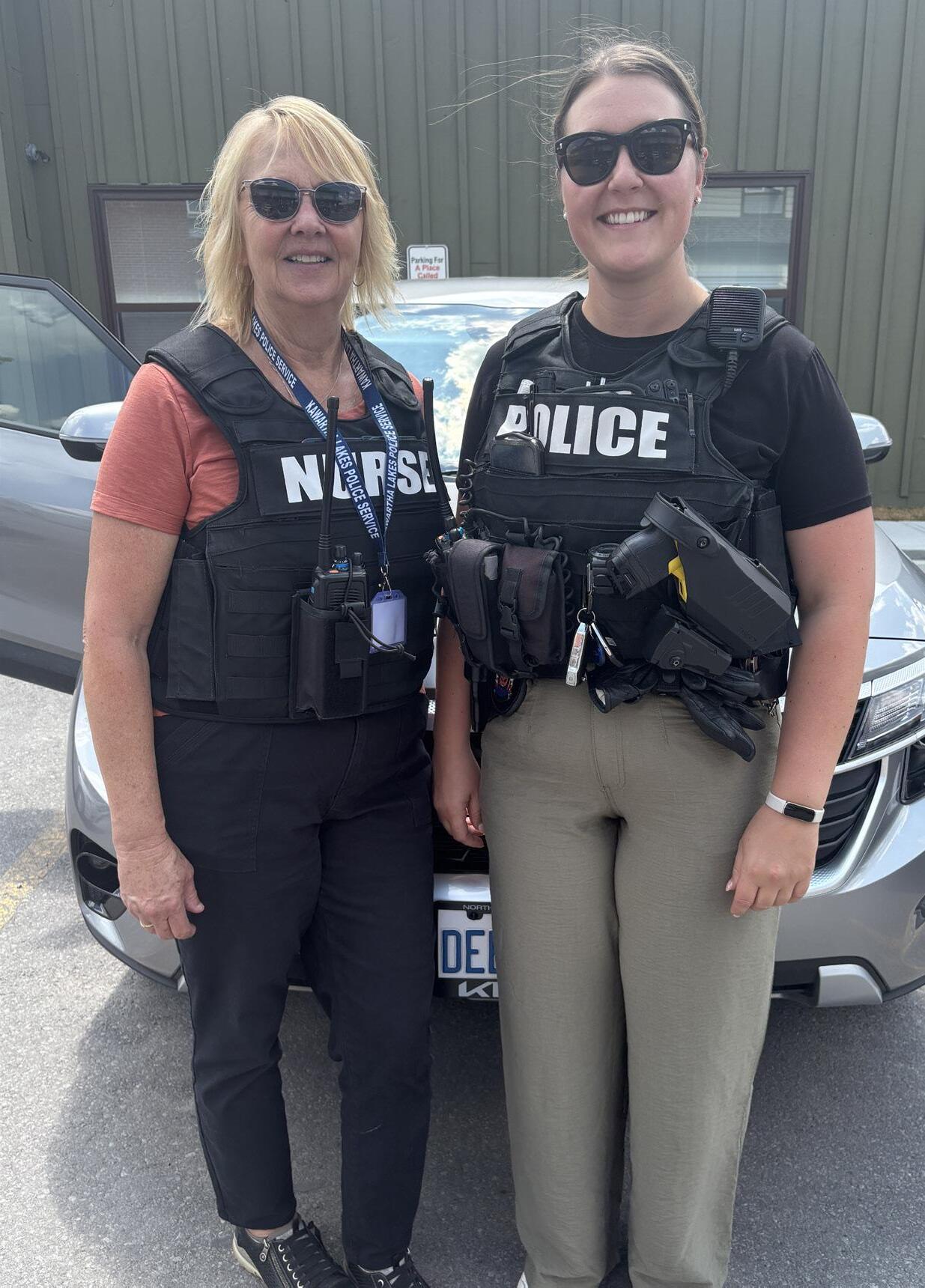
The building known simply as 111 William Street offers a lot of resources. “They will feed them, give them some food. Give them some snacks. If they need some paperwork done, they can help facilitate that. With the community paramedics being there, it’s great, they’ll get bandages changed,” Mather said, referencing the man in the park with the injured arm.
A lot of the work the team is doing is to try and reduce the stigma that those dealing with substance abuse or mental health crises face. “All of us are one incident away from being in their same position,” Stratford said.
While leaving to get some water for the man in the tent, a bystander inquired as to what Stratford and Mather were doing in the park. He had been homeless, so he was quick to understand the work the two were doing, but Mather said oftentimes members of the public they interact with haven’t been in a similar situation and need more education on what these types of programs are trying to accomplish.
They often will get calls for behaviour that the public has chosen to criminalize. “There are calls for people that aren’t doing anything, they’re not bothering anybody. You’re just calling the police on somebody for just living their life – they’re not doing anything that’s criminal, and that just adds to the stigma,” Mathers said, pointing out that living in a tent isn’t a crime.
The other kind of call police often get is about people asking for money outside of banks. While the teams responding know that they’re “not trying to hurt anybody,” the public may not realize that, even if they’re not being aggressive.
A lot of the work the team is doing is to try and reduce the stigma that those dealing with substance abuse or mental health crises face.
Stratford and Mathers spent a long time gaining the trust of one woman. They would stop every time they saw her and offer her resources. Finally, one day she said she was ready for treatment. Now she’s out of Kawartha Lakes and they text with her routinely to know she’s still on the right path.
Another man who they received many calls about outside a grocery store took a while to build trust with. Now “he has housing, he’s doing well,” Stratford said. They still check in on him while they’re out because all it takes is one misstep for them to be back to where they were, and it’s easier to be proactive.
team where they spend much of their time following up on flagged calls.
Photo: Robyn Best.
While this team is trying to gain the trust of those in vulnerable situations, the mental health team is doing similar outreach elsewhere. With the sun at its zenith, I meet up with Constable Taylor Stewart and Shelia Carron, a community response registered nurse.
When a team isn’t on duty, certain calls are flagged as needing a follow-up. That task often falls to the mental health team. They spend their time going to different addresses, trying to make contact with these individuals. It’s not always easy. “The occurrence address might be where the occurrence happened, it doesn’t necessarily mean that’s where they live,” Carron said, saying it’s common to have to go to five addresses to find somebody. The duo have fobs for many of the apartment buildings in the area, to allow for quick access when they’re doing a check.
One follow-up they were doing was on a woman who had many people living in her apartment. She was most likely being taken advantage of, according to police, but she refused to make them leave. “We don’t have the legal authority to just kick them out,” Stewart said. The person living in the unit has to want the person to be gone for the police to be able to do anything. “That individual has the right to have whoever they want in their unit.”
Many of the people in situations like this are being taken advantage of and may not fully realize it. “A lot of it is just building a relationship with the client and educating them and trying to break through to them that this is happening,” Stewart said.
Similar to the substance abuse team, there are still legalities they have to follow. City outreach workers, like Mather, cannot go onto private property even if there are tents there; nor can she open any tents. However, the police can for wellness checks, something Stratford did while the Advocate was with them. When nobody in a tent responded to him, he opened the tent up to find it was empty, but he had to check to ensure nobody is in distress.
There tends to be distrust between many people on the streets and the police.
The two also check in to see if people are making it to their court appearances. Stratford says they work closely with probation officers to try and prevent more charges being added. “Our probation knows we’re dealing with them, instead of just having the court get a warrant right away. They chat with us, see if we’ve had some interaction with them,” he says.
“If we can locate them, I find a lot of them – they just get overwhelmed.”
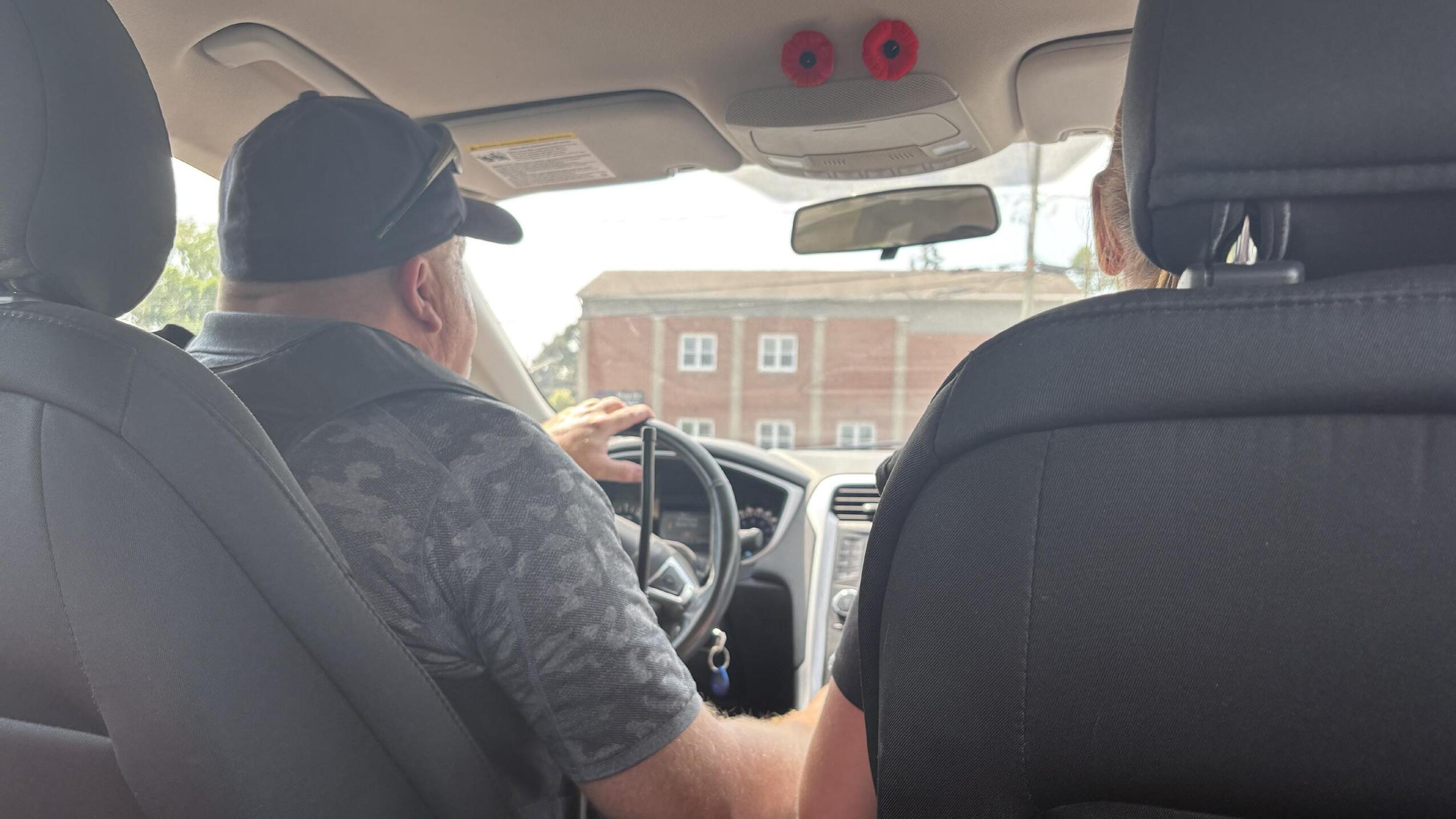
Stratford and Mather spend a lot of their time driving around to different parks to offer support to those in need.
There tends to be distrust between many people on the streets and the police. So the teams go in knowing they aren’t necessarily getting somebody willing to get help right away. One woman they have often attended to has been out on the streets for years.
“We’ve tried to get her hooked up with resources, and at this point, she’s just not willing. So, we’re hoping every time we just get a little bit more information to her, and at some point, she’ll be ready,” Stratford said.
The outreach team is looking to help someone as much as they are willing to accept help. Mathers says that they get gift cards donated, but they often go with the person to ensure the cards aren’t just getting sold. “If you want a coffee and donut, let’s go get you a coffee. If you need some food, we’re happy to go with you or go get it for you,” she said.
The mental health team, just like the addictions team, intends to build trust, not to make people feel like they’ve committed a crime – which many have not. They’ve often gotten calls about tents up at Lindsay’s Memorial Park. Instead of telling the people in tents they must go elsewhere, Stratford told them to just move the tents further back, away from where they could be easily seen by families with young kids. They listened, without incident.
“A lot of people are trying not to be out in the open,” Mathers said, again pointing to the fact that people aren’t looking to be in a situation like this and don’t want others to know where they are.
Both teams are also taking regular 911 calls while doing outreach. The mental health team tries to attend any calls that involve “mental health, suicidal or well-being checks, (or) maybe a dementia patient that’s gone missing,” Carron said.
the right to live as unwell as they want to, as long as it doesn’t harm them,” Stewart said. “A lot of people are like ‘this person needs help.’ We are well aware that people need help, and we would love to help them, but we can’t force that help on them.”
As the afternoon wraps up, I think back to the morning outreach team of Stratford and Mather. I asked how they’re able to just step away from everything they see at the end of the day.
People dealing with their mental
health
aren’t always ready to take the steps to get help right away.
People can register themselves or a loved one onto the vulnerable person’s registry, something that Carron and Stewart can help people do online. This can allow those who would be considered vulnerable (for example, if they have dementia, autism, or manic episodes), to be listed as a higher priority for checks.
People dealing with their mental health aren’t always ready to take the steps to get help right away. “People don’t understand that people have
Stratford says it’s not something you can always do. He goes home and still worries about the vulnerable people on the streets. To try and help in his own way he volunteers with the army cadets. “We do lots of training and teaching on substances and how you could be in that position,” Stratford says, hoping to be able to prevent more people from getting into these situations.
There is no easy solution for addressing homelessness, addiction, and mental health challenges, but Kawartha Lakes Police Service’s outreach programs are offering alternative approaches based on empathy and engagement for those who are most vulnerable. LA
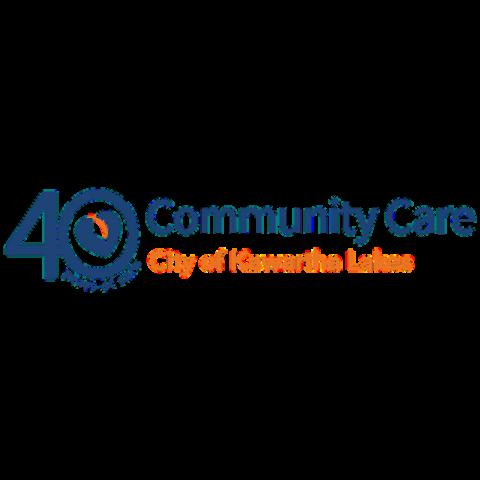
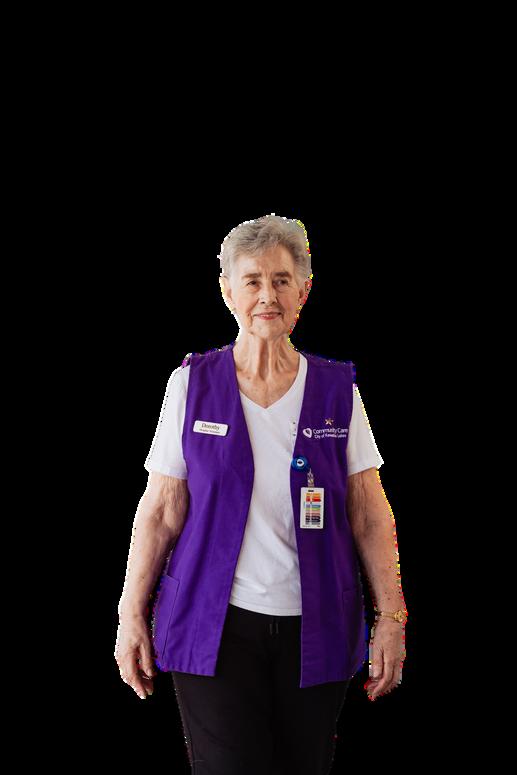

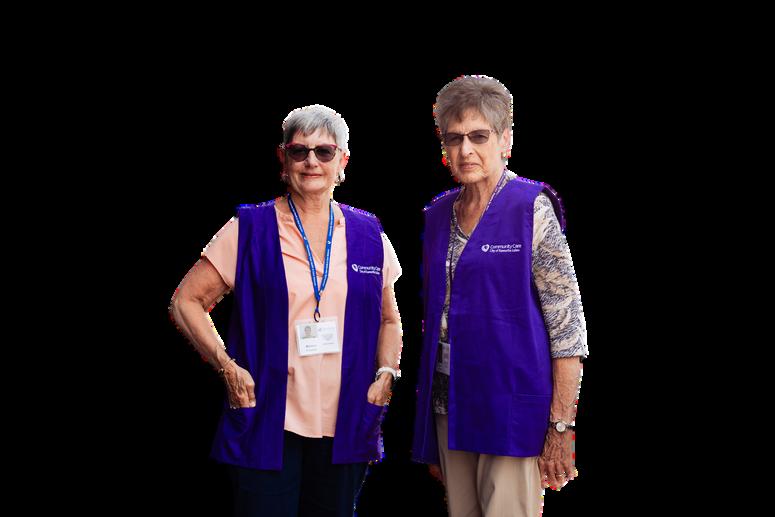







Will growth in Lindsay and Kawartha Lakes overwhelm our sense of community or can we take steps to preserve it?
By Ian McKechnie
For almost 120 years, locals and visitors alike have been gathering for food and fellowship at the Olympia restaurant in downtown Lindsay. It is not unusual for the staff to address you on a first-name basis – and if you’re at all a regular, the servers might even know what you are going to order to drink.
Similar scenes play out at the popular Kindred Coffee Bar, a short walk to the west. Here too, the affable team behind the counter seem to call many of their guests by their first names. Impromptu reunions between old friends are not uncommon at the aptly named Kindred, and a short coffee break can easily turn into a good hour or more of catching up.
Both Kindred and the Olympia are surrounded by historic buildings gracing a main street that, with only a few exceptions, retains much of its Victorian charm. Pedestrians make their way along the sidewalk, sometimes stopping to chat. On multiple levels, these scenes are indicative of what we might imagine when we hear the term “small town.”
Take a 10-minute drive to the south, however, and a very different story is unfolding. Highway 7 is being widened to accommodate an increasing influx of traffic, with the ubiquitous golden arches of the town’s second McDonald’s towering above one of the main arteries into Lindsay. Meanwhile, the steady rumble of earth-moving machinery heralds new residential developments on the east and west flanks of town.
Is this the harbinger of things to come? Will Lindsay one day resemble Barrie, Markham, Newmarket, and other communities where sprawl has overwhelmed what were once little towns surrounded by farmland? Will our historic downtown
streetscape drown beneath a forest of high-rises? Will we grow so much that we no longer know one another on a first-name basis?
In short, will we cease to be a “small town?”
And how do we define a small town anyway? Is it just about population – or is there something more to it than that? Are those who question the wisdom of growth merely dewyeyed romantics, rallying around the cry of “not in my backyard!”? Or might they be raising legitimate concerns?

“Small town” Lindsay was on the verge of significant growth when this view was captured in the early 1960s, but nothing like today’s projected population boom. (Maryboro Lodge: The Fenelon Museum collection.)
Lindsay has been wrestling with these questions for decades. An editorial in the March 21, 1956, edition of the Lindsay Daily Post offers some instructive insights about how citizens felt about their small town almost 70 years ago: “These persons enjoy the personal relationship which exists in a town the size of Lindsay where it is possible to walk down the street and not feel (like) a stranger. They like the idea of being able to get to and from work with great ease... no traffic snarls to fray their tempers and no long jaunts by bus or trolley; they enjoy their proximity to home, and when the season is right, lake or stream; they prefer a smaller place where air pollution (so much discussed today in larger centres) is not uncontrollable; they bask in the luxury of being able to get home for lunch without too much hustle and bustle and they find there is sufficient activity to make for a well-balanced life.”
“Lindsay’s population now sits at more than 22,000 – but that figure could double in 10 years or so...”
When that editorial appeared, Lindsay was on the cusp of significant growth. Three years before, outgoing Mayor Charles Lamb was predicting that Lindsay would outgrow its image as a small community: “The Town of Lindsay is no longer a small town...we are now in big business,” an optimistic Lamb told reporters in 1953. “Lindsay is a great town. You can’t stop it from being a city. I predict that in five years the population of Lindsay will be 18,000.”
Lindsay’s population now sits at more than 22,000 – but that figure could double in 10 years or so, as Mayor Doug Elmslie told the Advocate in May. This is “going to start happening, out to the year 2031, where we can expect that the town of Lindsay itself will probably double in size,” said Elmslie.
Growth is inevitable. If we treasure those things enumerated in the Post’s editorial from 1956, what are we doing to preserve and celebrate them – even as we grow in population and geography?
One of the first definitions that comes to mind when we think of small towns might be an aesthetic definition –what does its downtown core and immediate vicinity look like? For many of us, small towns aren’t filled with skyscrapers and strip malls jostling for space with 150-yearold storefronts.

“For me, a small town is a place where people are friendly, traffic is patient, and there are all manner of delightful things going on...”

To ensure that new development doesn’t unduly compromise the look and feel of the attractive downtowns that are heavily promoted in tourist literature, Kawartha Lakes relies on its municipal heritage committee (of which this writer is a member) and heritage planning staff to provide the appropriate guidance to decision-makers.
“The preservation of local heritage, both by municipalities and by local residents and community organizations, is vital to preserving the different places and spaces that define a community as a small town and speak to its unique history and identity,” says Emily Turner, who serves as the heritage planner for the city. “This can include the designation of important heritage buildings and areas, like distinctive main streets and downtowns, as well as telling and preserving local stories and sharing them with both old and new residents and visitors alike.”
There are, then, guardrails built into the planning process to ensure that this aesthetic definition of the small town is kept at the forefront of decisions around development. Still, a designated downtown streetscape does not a small town make. So how else might we define the term?
For many people, as that 69-year-old editorial suggests, a small town is not something that can be defined merely by pointing to population statistics or even the picturesque appearance of its main street. It is rather something more elusive and intangible – a sense of connection, perhaps, or belonging that is not always obvious in larger communities.
Kristy Gordon grew up in Bobcaygeon and later relocated to Toronto, where she enjoyed a great career in the publishing business. Life in the big city had its advantages – but Gordon eventually felt that something was missing, something that her urban lifestyle wasn’t satisfying.
“Every day was the same,” she recalls. “I got up and went to work and came home. I lived in an apartment with a cat. I didn’t even know my neighbours. I had work friends and a few friends from university but that was it. I didn’t really do anything that mattered, I had loose connections to people and while there was always a restaurant or a bar or a show to go and see, what was really the point?”
Looking for a change, Gordon went into teaching and ended up on the faculty of LCVI in Lindsay. “It might not offer all the diversity and excitement of a big city, but I think that what we have is just as important and it’s not until you are older that you realize this,” Gordon observes of her adopted hometown. “We have the safety of knowing our neighbours. This is a place where you can put down roots and develop connectivity and those things become precious as you get older.”
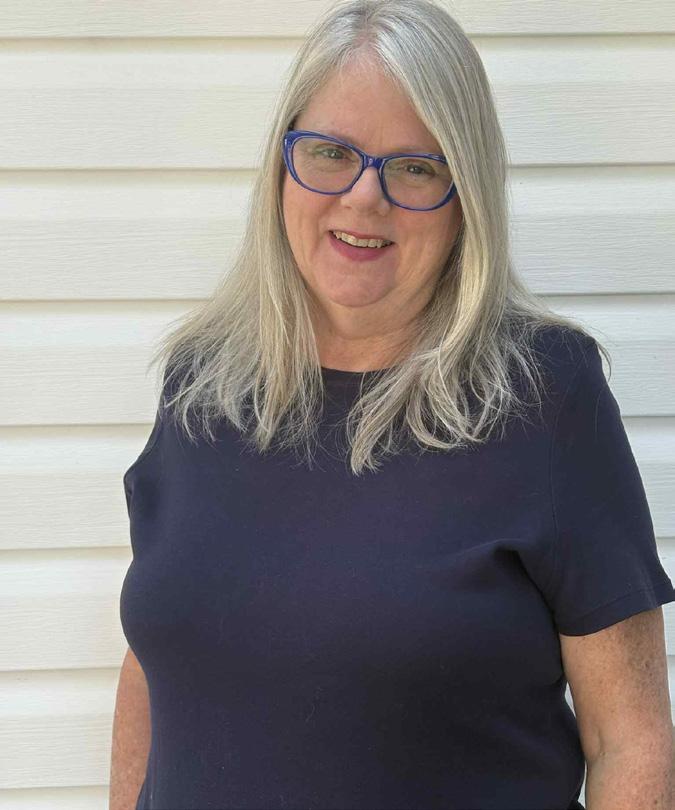
to
For Victoria Shepherd, hospitality is a powerful indicator of what constitutes a small town.
“For me, a small town is a place where people are friendly, traffic is patient, and there are all manner of delightful things going on,” says Shepherd, who in 2025 was hired as the general manager of the Flato Academy Theatre. “I think there will always be growing pains –increased traffic, higher real estate prices – but I think and hope that the reason Lindsay is growing is that those unique qualities make this small town so inviting. I think small towns have a reputation for being welcoming and this will be a huge foundation to keeping Lindsay so special even as it grows.”
Shepherd is trying to ensure that the theatre will continue to embody those small-town traits. “We are doing this by creating a welcoming space for everyone in the community, by offering discounted rental rates to high schools and not-for-profit community groups, and by producing shows that offer opportunities for our community members to participate in, both on and offstage,” she says.
Despite the efforts of Shepherd and others to ensure that these intangible qualities of small-town life aren’t lost in the vortex of growth, others are worried.
For Penni Holdham, her concerns revolve around both the dilution of a small-town aesthetic and what this might mean for quality of life. “I do very much hope that Fenelon Falls does not morph into some version of Newmarket with no backyards or spaces for kids to play at home,” says Holdham of her community. “This commitment (on the part of developers) to mega-mansions with two-car garages and no open space is so not the scene of a rural community.”
Increasing traffic is another concern among those who value small town life. One of the qualities of small towns enumerated in that 1956 editorial is the fact that they are especially well-suited to pedestrians: “They like the idea of being able to get to and from work with great ease...no traffic snarls to fray their tempers and no long jaunts by bus or trolley.”
The Advocate spoke with Vicky Kiegelmann, a resident of Barrie who grew up in Lindsay. She has watched over the years as Barrie has grown in all directions. For her, downtown Barrie has become almost too busy for those who enjoy strolling. (In fact, some estimates have Barrie’s population expected to jump to nearly 300,000 by 2051.)
For Gordon, the retired teacher, she is not Pollyanna about the city growing larger. “It’s so important to the life of a small town to have growth,” says Gordon. “But uncontrolled growth can lead to many problems and those we are starting to see. Population growth without growth of infrastructure is a problem.”


Back in downtown Lindsay, the clatter and rumble of heavy equipment engaged in highway-widening work and the cacophony of traffic on Kent Street takes a back seat to the sweet din of conversation in the booths at the Olympia, and the tables at Kindred, as friends gather to relax in public.
Such places are necessary to sustaining our understanding of what it means to be a small town, observes Richard Gauder, co-founder of 100 Men Kawartha Lakes.
“The essence of the small-town feel is rooted in connectedness, a sense of belonging, and a close-knit community where people know and rely on each other,” he says. “We need more ‘third places’ – not work or home. People need to proactively get involved both in their neighbourhood and the town.”
If we can manage to do this – as a municipality, as businesses, as cultural institutions, and as individual citizens – then we may yet hold fast to a small-town vibe well into the future. LA
What do you think we need to do to keep small town life in Kawartha Lakes? Send us your thoughts to info@lindsayadvocate.ca.

Volunteer with the Alzheimer Society.
Volunteering means having fun, making friends and creating joy!
A few hours of your time could change the life of someone living with dementia
This summer, myself and the Budget Committee would like to hear from you on your priorities. Your input will be considered in our planning for the 2026 Budget
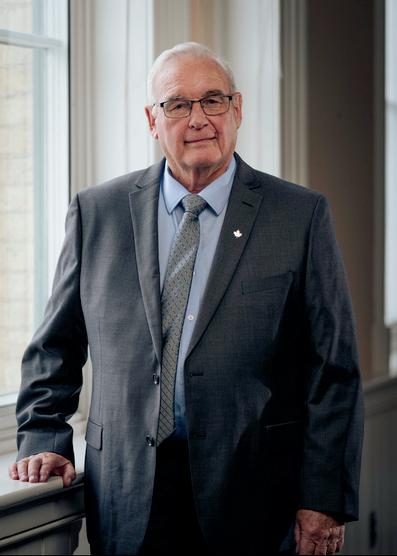
A large part of the municipal budget is fixed, similar to the amount you'd set aside for paying your mortgage, insurance, and cost of household repairs However, there are areas where the service levels can be adjusted to meet community priorities and your voice helps guide those decisions.
Use our interactive budget tool to show your support for the service enhancements that are most important to you. Your input helps shape how we invest this flexible portion of the budget to best meet the needs of our growing nity

r, we can shape a budget that reflects the needs es of our community
sit the website below and learn about the municipal process and weigh in on the areas that are important and where you’d be willing to invest tax dollars.
efore August 30, 2025 For a full budget schedule, website: www kawarthalakes ca/budget
ur feedback matters!


Please visit our website for more information and available






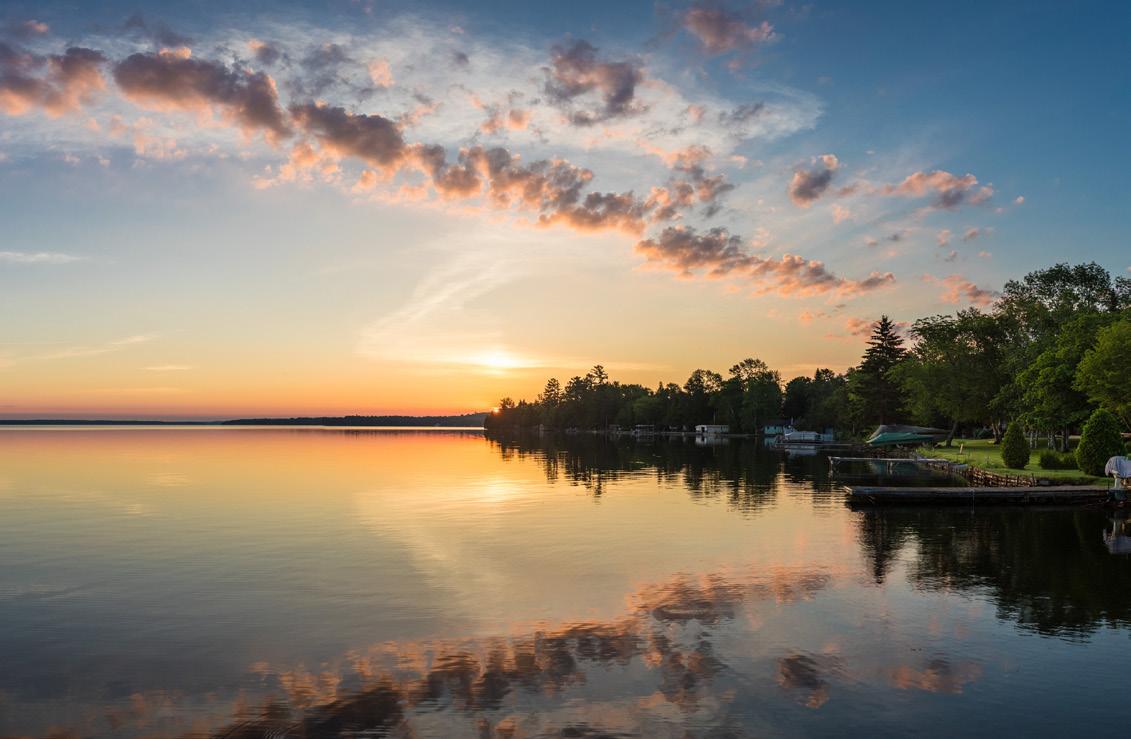





At WARDS LAWYERSPC, we recognize the emotional and mental toll that legal challenges can bring. That’s why we are committed to delivering tailored legal solutions, helping our clients navigate difficult times with confidence and clarity.

This month marks one year of Mansur’s Musings. Bitter-sweetly, it will also be my last musing for The Lindsay Advocate, as I’m off to start my master’s in journalism. In fact, at the time you’re reading this, I’m probably wandering around campus orientation, awkwardly looking for the booth to pick up my student ID. So, I’m writing to you from beyond (the border)!
By Aliyah Mansur Contributor





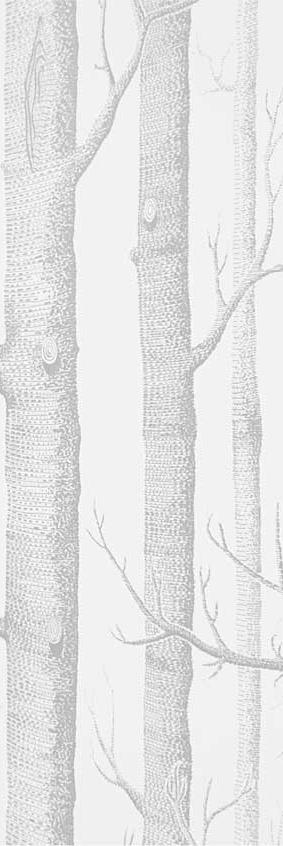






When I started at The Advocate a year ago, I had zero experience or education in journalism. Mostly I had written overly academic essays in undergrad and countless emails at my old corporate job (which taught me a surprising amount about writing simply and succinctly). Our publisher, Roderick Benns, took a chance on me (cue ABBA), welcoming a newcomer onto his team to ensure that other people similarly new to this community might have their perspectives reflected in print. Having only moved to Kawartha Lakes at the beginning of 2024, it’s been so rewarding getting to know this community through interviews for articles, attending local events, and through the occasional delivery of our publications around town. It’s been an honour to be trusted to give our communities’ stories the time, effort, and nuance they deserve, both here and occasionally in the Kawartha Lakes Weekly newspaper. Through every tight timeline, last minute photoshoot, and thousands of lines of text written, read, and reread, I’ve learnt an indescribable amount from this small but mighty publishing team. But mostly, I’ve learned that local journalism is the lifeblood of a town: it holds a mirror up to our shared lives and reminds us
of what matters. Without local media, our widespread community might lose the throughline, the pieces of the puzzle that connect us to our neighbours, celebrating our differences and similarities in equal measure. I’ve seen our publications help people find work in an increasingly difficult job market and give people a voice when they are going otherwise unheard. In an age where attention spans are short and trust in media is often shaken, this magazine has shown me the enduring power of showing up — consistently, thoughtfully, and with care. Plus, there aren’t many publications out there where you can call the publisher directly (and actually get through).
But mostly, I’ve learned that local journalism is the lifeblood of a town.
Over the year and a bit that I’ve lived and worked in Lindsay, I found a place and sense of belonging that I never did in 25 years in my hometown of Toronto. Kawartha Lakes also helped me find a new love for my country, with its beautiful nature, kind people, and peaceful energy.
Pursuing further education feels like an expansion, not an exit. I hope to return better — not just with more thoughtful questions, but with a deeper understanding of the changing media world. The kind that equips me to protect local journalism, not just practice it.
So maybe this isn’t quite goodbye. Just the turning of a page, with the promise of another one to come.






























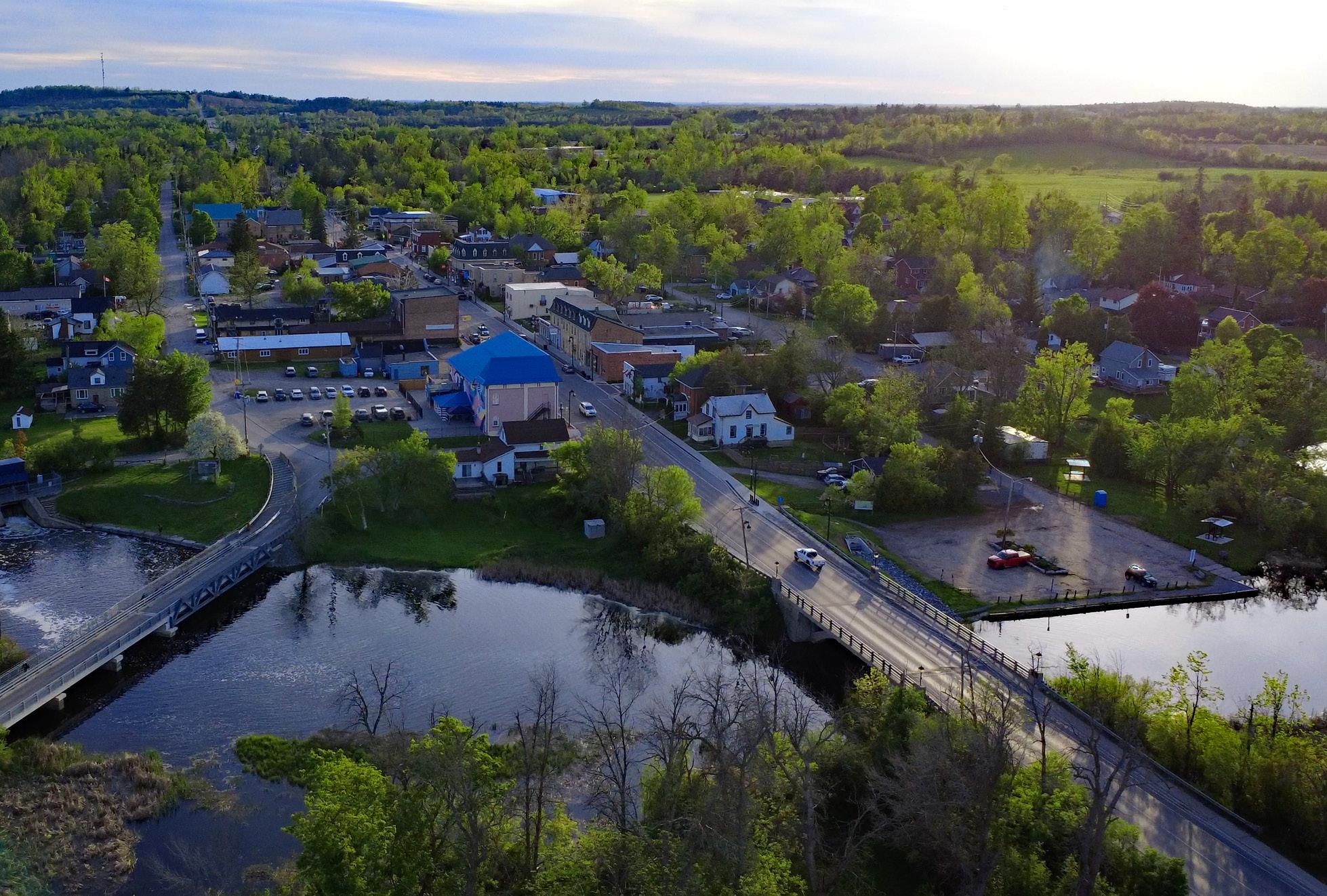
Shaun Toutant found his passion for filming when he was 16 after taking a communication technology class. He and his friends were excited to be able to get a credit for simply filming themselves skateboarding. “I found I was very good at holding the camera,” he said. As the class went on, “I would just skateboard for the purposes of filming,” Toutant said, finding himself drawn to the camera.
Toutant was always interested in the behind-the-scenes of television. As a kid, he auditioned to be on You Can’t Do That on Television. The audition didn’t go well, Toutant says, because he was “looking past the camera at all the lights and technology and the cables.”
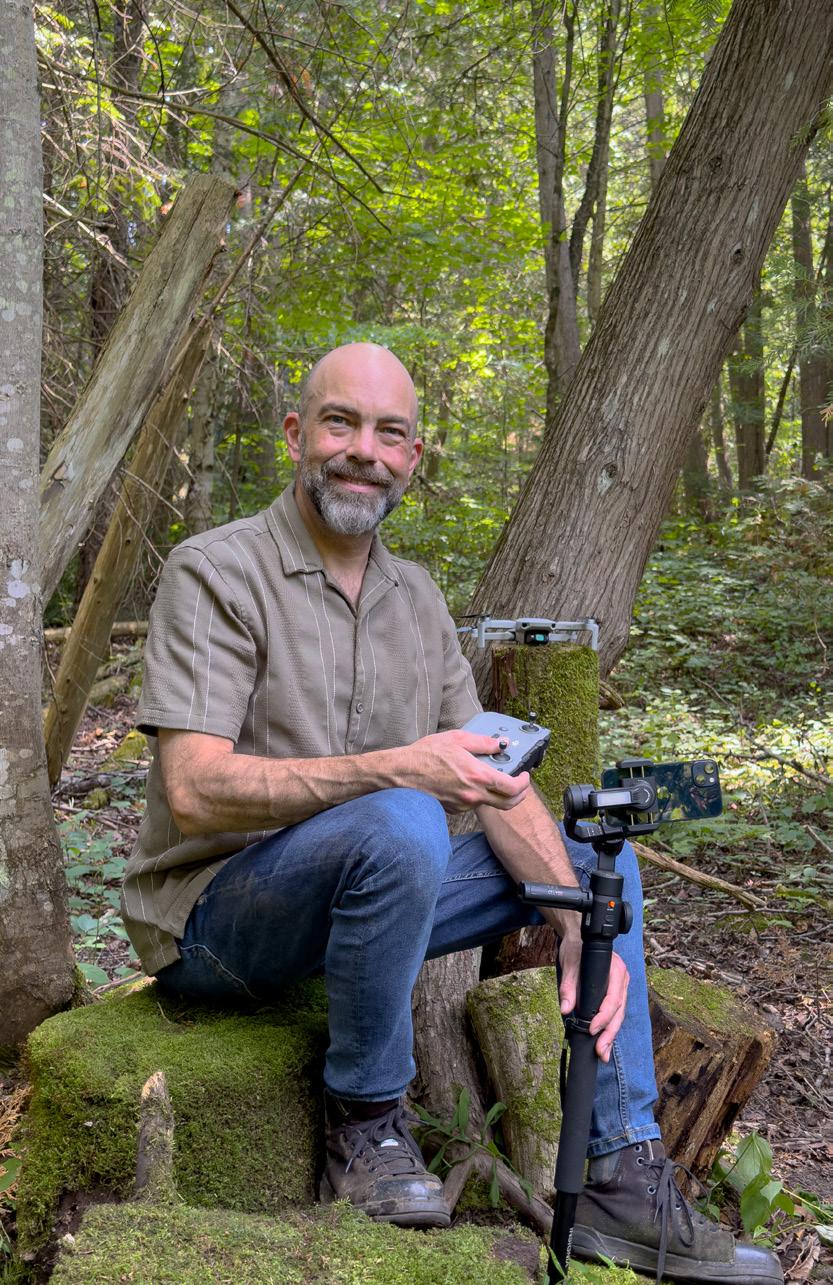
By Robyn Best
Upon moving back home after attending Canadore College, he volunteered on a show that was hosted by one of his skateboarding friends from high school, Tom Green. While part of him regrets not sticking with the show, “I had dreams of music video directing and bright lights in the big city,” Toutant said, which drove him to move to Toronto, where he quickly got into editing.
In Toronto he worked for Corus Entertainment where he would help with special effects, or doing subtle fixes to animations, until he was laid off. Toutant thought this was a position he would never leave, as it was his dream job. “As shocking as (being laid off) was, I took a minute and zoomed out and realized I can escape now,” Toutant said. “This is actually a massive blessing in disguise.”
Toutant was able to get some help from Starter Company Plus, which gave him funds and mentorship.
After working in Havelock for five years at another production company, hours began to dwindle. “I thought, all right, let’s start doing more YouTube videos.” With technology continually changing, Toutant no longer needed a studio to make high-quality content.
He compares this change to his early skateboarding days, where he would face down a 12-foot-high ramp where
Shaun Toutant at the Emily Tract, the hiking trails near Peace Road in
you could skate down it, or you can back down. “If I didn’t just lean out and go for it, it wasn’t going to work.”
That leap of faith led to Woods Avenue Digital, Toutant’s company that focuses primarily on commercials, documentaries, and music videos.
“When I first arrived in the Kawarthas, people would look at me like I had two heads,” Toutant said. People didn’t understand how you could make videos out in the countryside, away from the big city.
Toutant was able to get some help from Starter Company Plus, which gave him funds and mentorship. “I’m a creative professional – I’ve never actually run a company or done any of the paperwork.”
“What I think makes us different with Woods Avenue Digital is we will use all the tools to convey a feeling, to take the viewer with us on a journey, so you can truly understand the message,” Toutant said.
With so much content flooding the online space, he believes creating that sense of narrative is essential. “Content without context is just meaningless noise. When I can provide content with context, then we’re taking you on a little journey.”
The company has been in Kawartha Lakes for two years, and while Toutant has regular clients, “we’re always taking on new clients. We’re always looking for new opportunities and ways to help out.”
Toutant thinks he can bring a unique experience to businesses looking for video content, like commercials. “I’ll use all these different techniques of editing and special effects, choice of music, and things like that.”
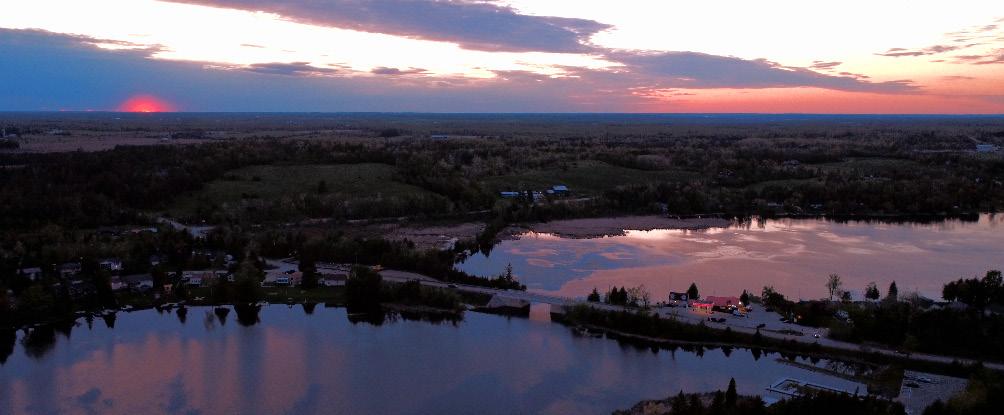
His newest project, which will soon be released, is called Brick by Brick, a documentary that looks at Omemee’s unique architecture.
“Seeing Omemee with fresh eyes, coming back after living in Toronto, I thought the buildings are unique and interesting,” Toutant said. “Now with my research experience and documentary skills, I thought I’m going to read up on these buildings and see
what’s going on here. And a little bit of research confirmed, they are, in fact, unique to Kawartha Lakes.”
So, as he would with any project, he wrote up a video treatment for it, and in this case, also took his drone out to get some shots. The final product will be up on his YouTube and social media @WoodsAvenueDigital and his website woodsavenuedigital.com. LA
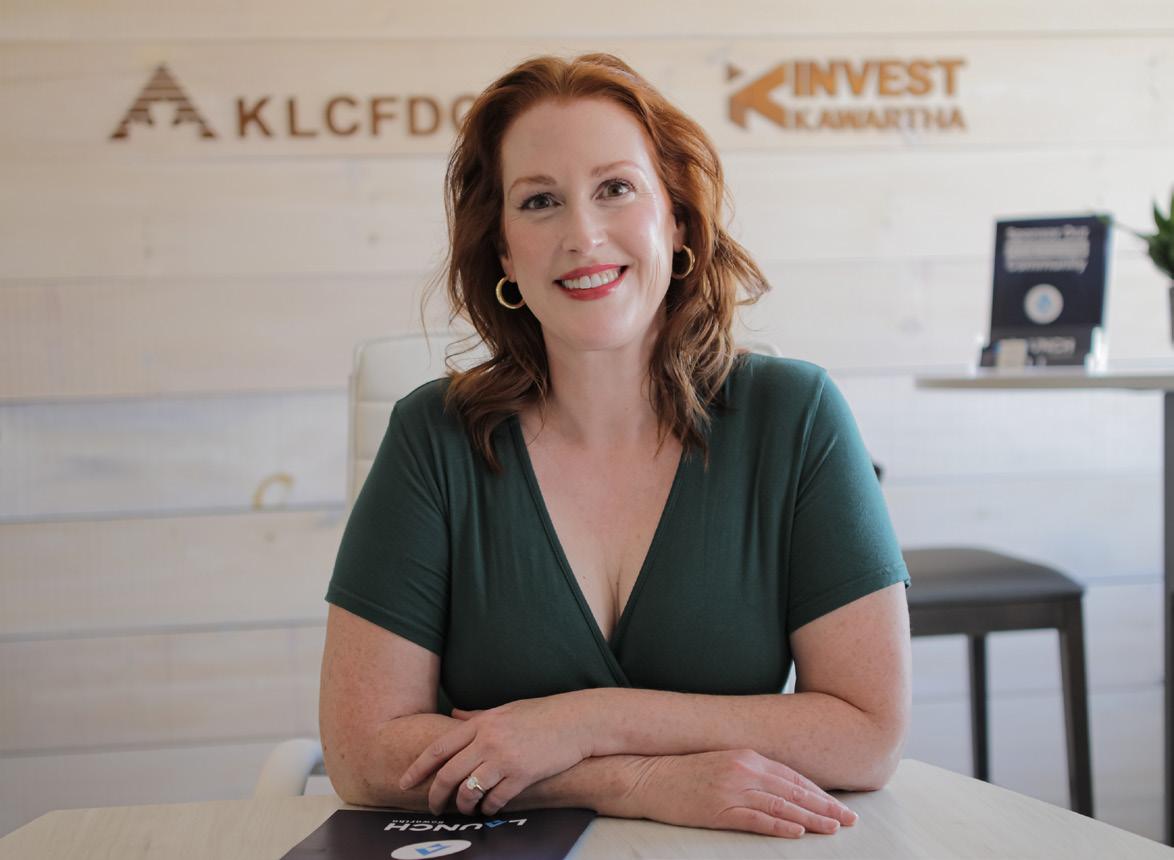
Samantha Burke, the former general manager of RBC in Lindsay, has made the move to Launch Kawartha.
Taking on the role of director of finance, Burke says her position “is all about supporting entrepreneurs on their journey to success.”
“I’ll be working directly with local business owners, helping them understand their numbers, access the funding they need, and build strong financial foundations. Whether they are just getting started or looking to scale, I’m here to provide the financial guidance and confidence they need to take that next big step,” Burke tells the Advocate.
“My goal is to make finance feel approachable, empowering, and aligned with their vision.”
She says the chance to work closely with passionate, driven entrepreneurs who are building something meaningful in our community has her excited.
“I’m excited to roll up my sleeves, dig into their ideas, and be a part of turning dreams into real, sustainable businesses. There is something incredibly powerful about helping someone believe in their potential and showing them how the right financial tools can make it all possible.”
The new role for Burke, in many ways, “builds on everything I’ve done in my career so far, but brings it to a more grassroots, community-focused level.”
She says she’s had the privilege of supporting clients in larger financial institutions, but working at Launch will see it be applied in a “more personal, hands-on way.”
“I’ll be walking alongside entrepreneurs at some of the most exciting, and sometimes challenging moments in their business journey. It’s a deeper kind of connection, where finance meets mentorship, and I’m really excited for that shift.”


By Clinton Edwards, senior designer at Hom Drafting and Design Inc.
The journey of designing or renovating a home begins long before walls are raised or floors are laid. One of the most essential and impactful considerations at the initial design stage is natural light. More than a stylistic choice, natural light influences a home’s energy efficiency, livability, and overall atmosphere.
From the very first sketches, homeowners, designers and architects should consider site orientation. Positioning the home to capture the sun’s path—especially placing key living areas like the kitchen, dining, and living rooms on the east or south sides— maximizes daylight and reduces dependence on artificial lighting.
Thoughtful window placement is also crucial. Large, strategically located windows can brighten interiors while framing outdoor views, improving both mood and spatial experience. Skylights and light wells are valuable tools in bringing daylight into deeper or shaded parts of the home.
Designing with natural light from the outset can also affect room layout, wall placement, and even material choices. Lighter colours and reflective surfaces can enhance the effect of daylight, making spaces feel open and welcoming.
Beginning the design process with natural light in mind sets a strong foundation for a home that is not only beautiful, but also comfortable, efficient, and deeply connected to its environment.
By Sarah Fournier


One year ago, we opened the doors to our new office space, but not before painting a massive mural on the wall.
If you’ve flipped through The Lindsay Advocate, you might recognize it from a previous cover story. (Yes, I painted it myself last summer. Turns out having Home Hardware in your office backyard can go a long way when inspiration hits.)
It’s been a year since Colour and Code moved into our current home, and it’s already hard to remember what business felt like before. For a long time, we worked above Ward Lawyers – for a solid decade, in fact – and then, like many others, moved to home offices when the pandemic hit. When we were ready to return, we dipped a toe back into shared space at Launch Kawartha, but soon realized we needed something more permanent. More open. More us.
This space has been exactly that.
Having a bright, beautiful, collaborative office has changed the way we work, both as a team and with our clients. The shift back to in-person connections has been powerful. Clients drop in during the day to plan, problem-solve, or chat about what they’re working on. (The Advocate team even hosts editorial meetings here from time to time. We like to think the mural helps with creative energy.)
We’ve found that having a physical space helps facilitate the kind of real-time collaboration that’s hard to replicate over
Zoom. Ideas happen faster. Brainstorms flow more freely. Our team has never felt more connected, and our work has never felt more aligned with the people we’re doing it for.
In many ways, this space has pushed us to think differently – not just about where we work, but how we work and what we offer. In the past year, we’ve reimagined our service model entirely. We launched Bits N Bobs, a low-cost subscription-based service that allows us to act as a fractional marketing team for our clients. It includes graphic design, website support, social content creation, and AI readiness, all rolled into one ongoing partnership. It’s a model born from the kind of relationship-building and collaboration that can only happen when you’re in it together, day to day.
There’s something about having a place where people can show up both physically and creatively that changes the dynamic. It’s made us more open, more curious, and more collaborative. It’s made us better.
So, here’s to one year in the new space. To murals and meetings and mid-afternoon drop-ins. To unexpected ideas on the whiteboard and last-minute (decaf) coffee-fueled brainstorms. To the clients who fill our space with stories, and the team that brings those stories to life.
I hope you stop by.vv
You can find Sarah and her team at colourandcode.ca

The Paw Patrol guy – you should have lunch with him.
I must have heard that several times before meeting up with the man himself, Lindsay’s Brian Pickett.
He’s likely used to that label these days, given the show’s global popularity. Recent estimates put the Paw Patrol franchise value at more than $14 billion. Yep. Billion, with a B. We might not be able to make our own automobile in this country, but we sure know how to create shows for kids –even for a global market.
The show originally premiered on TVOntario in 2013 before launching internationally on Nickelodeon, and it’s now one of Canada’s most successful cultural exports. And it’s still going. Paw Patrol is broadcast in more than 170 countries, translated into 35-plus languages, and has spawned movies, merchandise, and spin-offs.
The show is about a core group of six rescue dogs, led by a tech-savvy boy named Ryder. The heroic pups work together to protect their community with characters like firedog
Marshall, police pup Chase, and air rescue specialist Skye. All the animals have special gadgets and vehicles for their work.
If you’re a parent of a certain age, you have likely stepped on a Paw Patrol puppy action figure in the middle of the night, fighting back unwholesome expletives about the wholesome show. Or maybe you have gotten an ear worm from the series’ tunes in your head. That one you can blame Pickett on.
That’s because Pickett is a composer and music producer –and along with his two writing partners, Graeme Cornies, and James Chapple, they have been responsible for all the music you hear on the show (except the opening song) from day one. And the show just keeps going.
As we settle into our chairs at the Olympia Restaurant in downtown Lindsay, the genial Pickett tells me it wasn’t supposed to be this way at all. He only got into music as a teenager to meet girls.
“It was just an escape, early on, for a nerdy, scrawny kid. And it made me kind of cool with girls I thought,” he said. “They see me up there playing guitar…yeah, it was just supposed to be a cool factor.”
You could say it worked. Meg Ward was also a “band nerd” according to Pickett, even though she attended LCVI and he is an I.E. Weldon alumni. (Pickett entered Grade 9 as I was leaving Weldon, so I missed getting to know him back then.) But he and Meg still saw each other at band competitions, despite the different high schools.
Meg’s brother, Tod Ward, played sax beside Pickett. “One day I asked him if his sister was single – kind of kidding, mostly serious – and she called me that night and the rest is history,” Pickett says of his wife.
Our server, Ciara, takes our order. As with most public meetups, we decide this interview would be better with beer. A half pint of Port Perry Old Flame for both of us. (Hey, it’s Noon on a Wednesday – we didn’t want to get too crazy.)
It’s just potato bacon soup and pita bread for Pickett until he hears me order an Olympia Greek salad with chicken. He decides to get a Greek salad too. It was right out of college, Pickett says,
when he got a job in the dubbing room at a large recording studio in Toronto that did mostly advertising work. “I was basically copying and sending tapes to clients, and radio stations –stuff like that.”
Pickett and his writing partners had their sights set on writing horror movie scores. They were all diehard David Lynch fans (think Elephant Man, Blue Velvet art films, and Twin Peaks.)
“Anything dark and scary like that –that was our goal,” he said, pointing out the name of their enterprise is Voodoo Highway Music Group, after all.
And yet at the recording studio, Pickett made friends with a couple of the composers who came in, and eventually one of them gave him a job writing TV ads for Samsung. “It was our first real job in the industry,” says Pickett.
All this time they were living in Toronto, trying to get their careers to fully take off. He and Meg would come back to Lindsay to hang out with family on many weekends. “But we always felt so crappy leaving, packing our family up on a Sunday night while Megan’s brothers, Simon and Jay, would all be together for dinner or whatever,” because everyone could more easily get together.
But the portability of their work – and freedom to live where they wanted –would eventually be on the horizon.
“We had a scattershot approach to this when we started. We’d just take every bit of work that came our way in the beginning.”
Pickett and his writing partners had their sights set on writing horror movie scores. They were all diehard David Lynch fans (think Elephant Man, Blue Velvet art films, and Twin Peaks.)
Over almost a decade of doing ad work from 2000 to 2010, Pickett says his main claim to fame for awhile was for an ad he made in 2007 for Koodo, the discount cell phone carrier. Remember their catchy little commercial where the company’s name gets sung at the very end in a sing-song voice?
“Koo…dohhhh…”
“I think we did 30ish versions each,” he said. We were throwing everything at the wall. Wacky ideas, whatever came to mind. The one that ended up winning took me five minutes to make.”

Brian Pickett picks up his mandolin, one of the many instruments he uses in composition.
While it was mostly ads and some other gigs for Voodoo Highway for quite some time, they finally got the opportunity to demo for a cartoon.
“You have to audition for it, just like an actor would have to audition. There’s usually like 10-20 of us who are asked to submit something.”
That something was for Total Drama Island, an animated reality TV show aimed at a tween audience that was basically a Survivor spoof. It also came out in 2007 and would herald the beginning of their career writing for TV shows, mainly leaving commercials behind.
For his audition for the show, Pickett sat down with an acoustic guitar “and just belted out the theme song.” It was the first song he ever wrote on that instrument. And it got them the gig.
“It felt good. It felt new and exciting,” he remembers.
For most songwriting though, Pickett sits down at the piano and starts “yelling out gibberish” to get things going.
Ciara is back with a wide smile and a small tray full of food to go with our beer.
In between salad and soup mouthfuls, Pickett says that after they got involved in scoring the theme for Total Drama Island, their work gradually shifted to kids’ music – right around the time they started having their own children.
While working on World of Quest, an animated musical TV series, the director, Jamie Whitney, liked working with Voodoo Highway so much he “brought us on to (do) Paw Patrol when he was working on developing it – and thank God he did.”
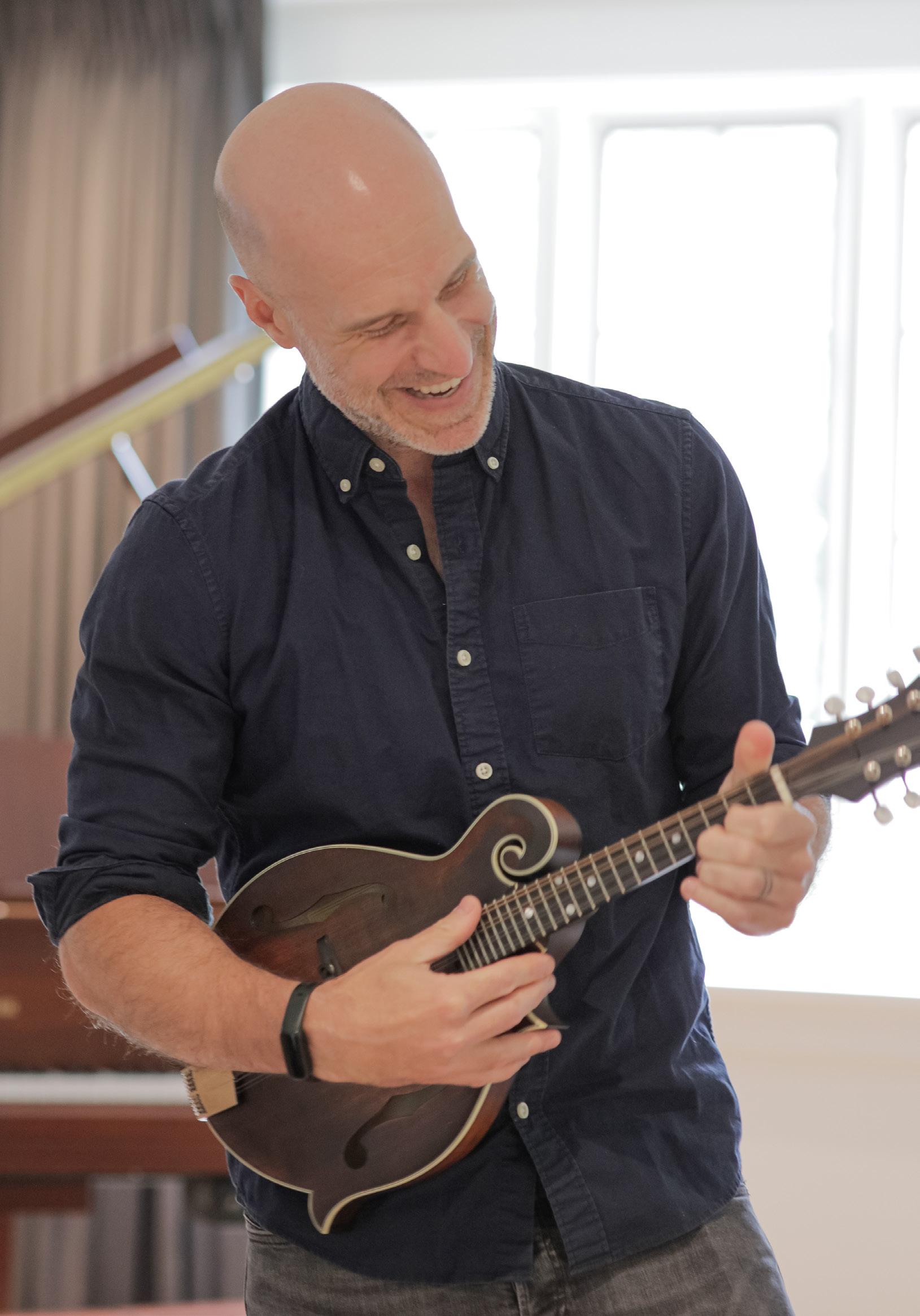
Paw Patrol was an absolute game changer, catapulting Voodoo Highway to ‘instant’ success (as if the groundwork had not been laid by years of work beforehand.)
From a commercial standpoint, it’s the residuals from the show that Pickett says has made it an absolute financial success for his team.
While the show is often criticized for being overly maudlin and shallow, no less than Malcolm Gladwell recently mounted a defense of the show on his podcast, Revisionist History.
Gladwell frames Paw Patrol as a “quintessentially Canadian” cultural artifact. He argues that the show reflects Canada’s national values – peace, order, and
good government. That’s because each pup represents a civic role — firefighter, police officer, construction worker — and they solve problems through cooperation and competence, rather than individual heroism. It’s the kind of civic idealism, Gladwell says, that’s rare in children’s programming.
When Pickett reflects on the success of Paw Patrol, he says there’s no doubt a hit show is hard to get. “But I guess if you’re playing those odds (the scattershot approach of taking everything that comes one’s way) then yeah, you might have a hit in there, and we lucked out.”
Pickett rethinks his statement. “I’d say it’s not so much luck that we won the show, but it’s luck that the show became such a phenomenon – that it hit the way it did.”
With their growing success and better technologies available compared to when they first started, the Pickett’s were able to move back to Lindsay in 2015, after a 20-year absence from their hometown. (After comparing notes, we realize this is similar to my own return to Lindsay after a 20-year absence, when I started the Advocate in 2017.)
Paw Patrol now has many additional characters and in 2023 it launched its first spinoff show based on the popular dog named Rubble who is, you guessed it, a construction worker. The spinoff, Rubble & Crew, is also scored by Pickett and team, and follows the adventures of the English bulldog and his construction crew family.
“It’s doing extremely well too.”
Voodoo Highway has had several hit shows at this point, as large as Paw Patrol has loomed. There’s the show for children aged five through eight called Odd Squad, “which follows two young agents, Olive and Otto, who are part of an agency that seeks to save the day using math when odd things happen,” according to IMDB.
And Daniel Tiger’s Neighbourhood – based on Mister Rogers’ Neighborhood, is a massive hit for PBS and Voodoo Highway, and is also carried by CBC Gem in Canada.
It’s difficult for the average person with no knowledge of the business to understand how Pickett’s workflow goes. When I told a handful of people I’d be interviewing Pickett, their immediate reaction was ‘oh, like Charlie in Two and a Half Men!’
Their reference to the 12-season-strong hit comedy that aired in the early 2000s and 2010s, where Charlie would tickle the ivories when the spirit moved him, is not exactly how it works these days, according to Pickett.
“That’s an old school reflection of what we do because back in the day, you would very much have a guy like me writing a song on a piano and then sending it off to people to arrange and produce it.”
The artist wouldn’t necessarily get to see how it was used until the product was released.
“These days,” Pickett explains, “you have to pretty much deliver a finished product.”
The fact that Voodoo Highway did that in their early years, in and around 2000, worked to their benefit, right at the transition between “old school and new school.”

“A lot of the older guys didn’t know how to use all the recording equipment, so I think that helped us out a lot. We’d come in with something a little more polished.”
Sometimes for the shows they are working on, the trio gets storyboards first so they can see the gist of the storyline. Animated shows take almost a year from storyboard or from script, and not all shows have lyrics – sometimes it’s just music they’re producing.
With their growing success and better technologies available compared to when they first started, the Pickett’s were able to move back to Lindsay in 2015, after a 20-year absence from their hometown.

Pickett’s preferred way of writing music is “in quiet and alone,” which sometimes means working at his home studio in Lindsay, but it could also mean heading into Toronto to their office near Parliament and Queen Streets, something he does once or twice a week.
With Paw Patrol alone it’s an episode every two weeks, and they take a break for Christmas for just one week. So there’s always lots to be done, let alone all the other shows and opportunities they juggle.
I ask Pickett if there’s a next chapter for his career, and what that might look like.
While acknowledging he’s of two minds about this, he says there is a side to him that is “very driven.”
And his driven side is telling him to try and get work for a big movie. “That’s the next step up from a hit cartoon. I mean, chances are I won’t be scoring Star Wars movies, but I could see the potential of scoring an animated movie.”
Voodoo Highway actually got asked to audition for the second Lego Movie. They called us in for an interview, as they knew us from Daniel Tiger because there’s so many catchy little songs in it.” Ultimately, they went with another team.
And there was that time they scored a Canadian-Japanese movie called Toilet, which perhaps surprisingly, was a high budget movie starring Tatiana Maslany, who most know from her incredible work in Black Orchid. “It’s centred on a family who is trying to afford to buy one of those fancy Japanese toilets for their home,” said Pickett.
And while that flick didn’t exactly make them flush with movie money cash, Pickett says they are open to other opportunities.
“That’s the next step up from a hit cartoon. I mean, chances are I won’t be scoring Star Wars movies, but I could see the potential of scoring an animated movie.”
The thing about movies is they are a huge commitment. “We’re putting ourselves out there to do them but there’s no doubt they can be a lot of work,” Pickett said, noting they can take up to a year to complete. Balancing that with all the TV series they do would be formidable, but it would be a challenge Voodoo Highway would love to meet.
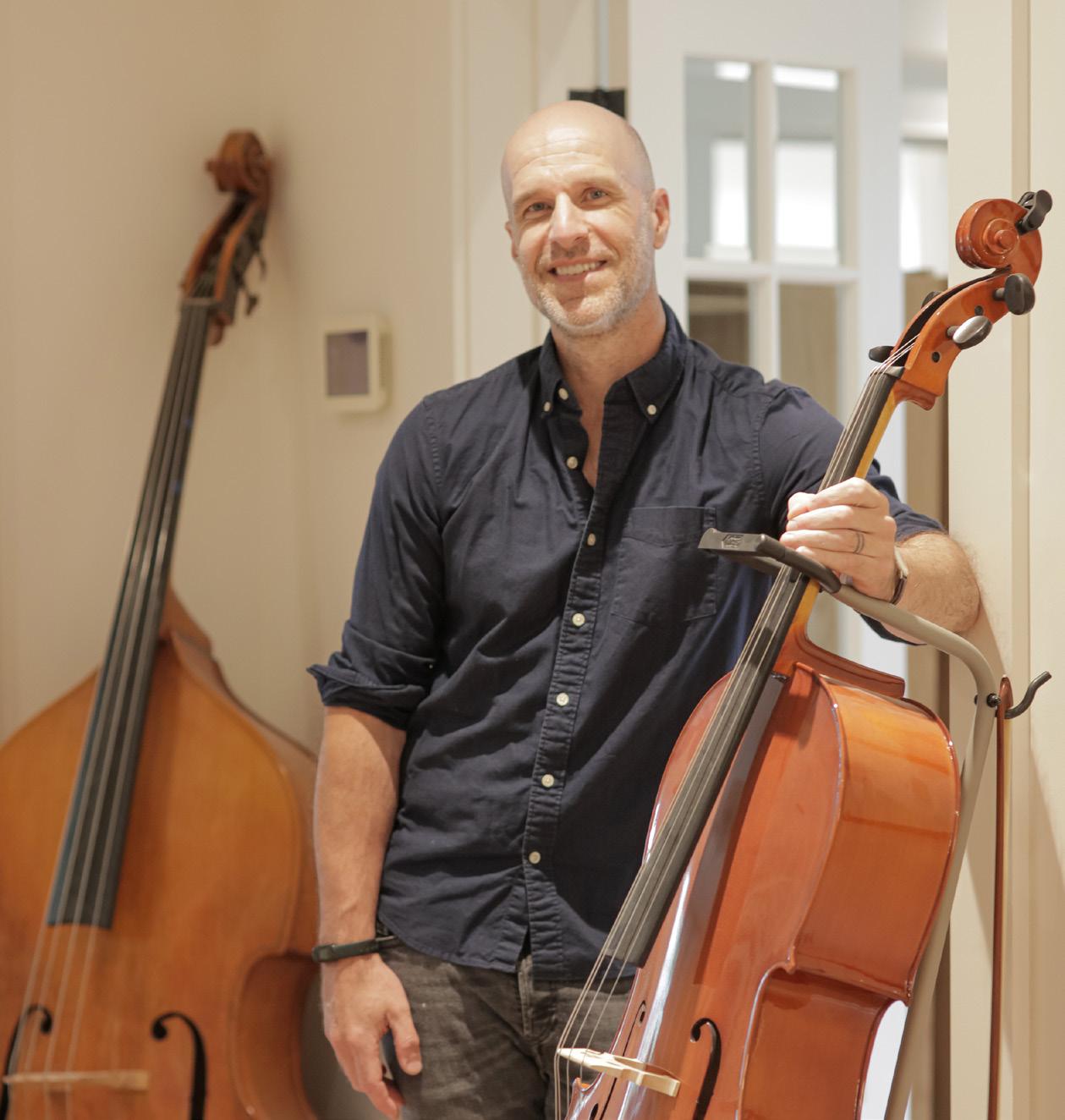
At this point, all that’s left is the most important question I can think of. If it all ended today, I ask, and you were forever known mainly as the Paw Patrol guy, would you be okay with that?
“Yeah, I would,” says Pickett with a smile. “As much as I’m ready to do more, I’m already happy and fortunate to have what I have, professionally and personally.”
Plates are getting cleared and beer glasses are empty. The core lunch crowd is moving on, shuffling through sunbeams near the Olympia’s wide entranceway.
The last remnant of conversation now drifts to politics and the general mood of the land.
We both lament the days when people were a lot less divided – and a lot less vitriolic. “There didn’t use to be so much sky between conservatives and liberals,” said Pickett.
“I just wish we could get along better than we have of late,” he says.
Ah, there it is. I ask him if this is just like an episode of Paw Patrol?
“Exactly,” he says with a laugh. “That’s what they’re aiming for, yeah? Everyone works together in a perfect land where everyone loves each other. You can’t really beat that.”
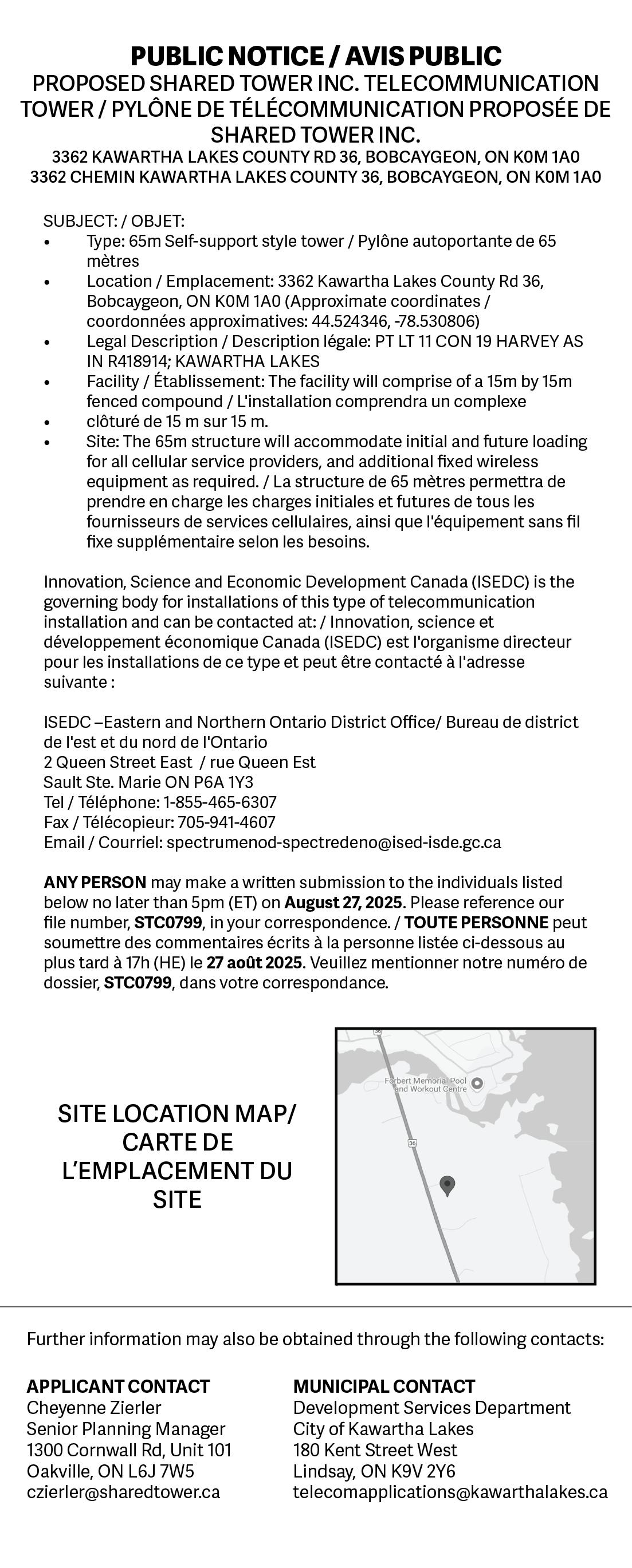
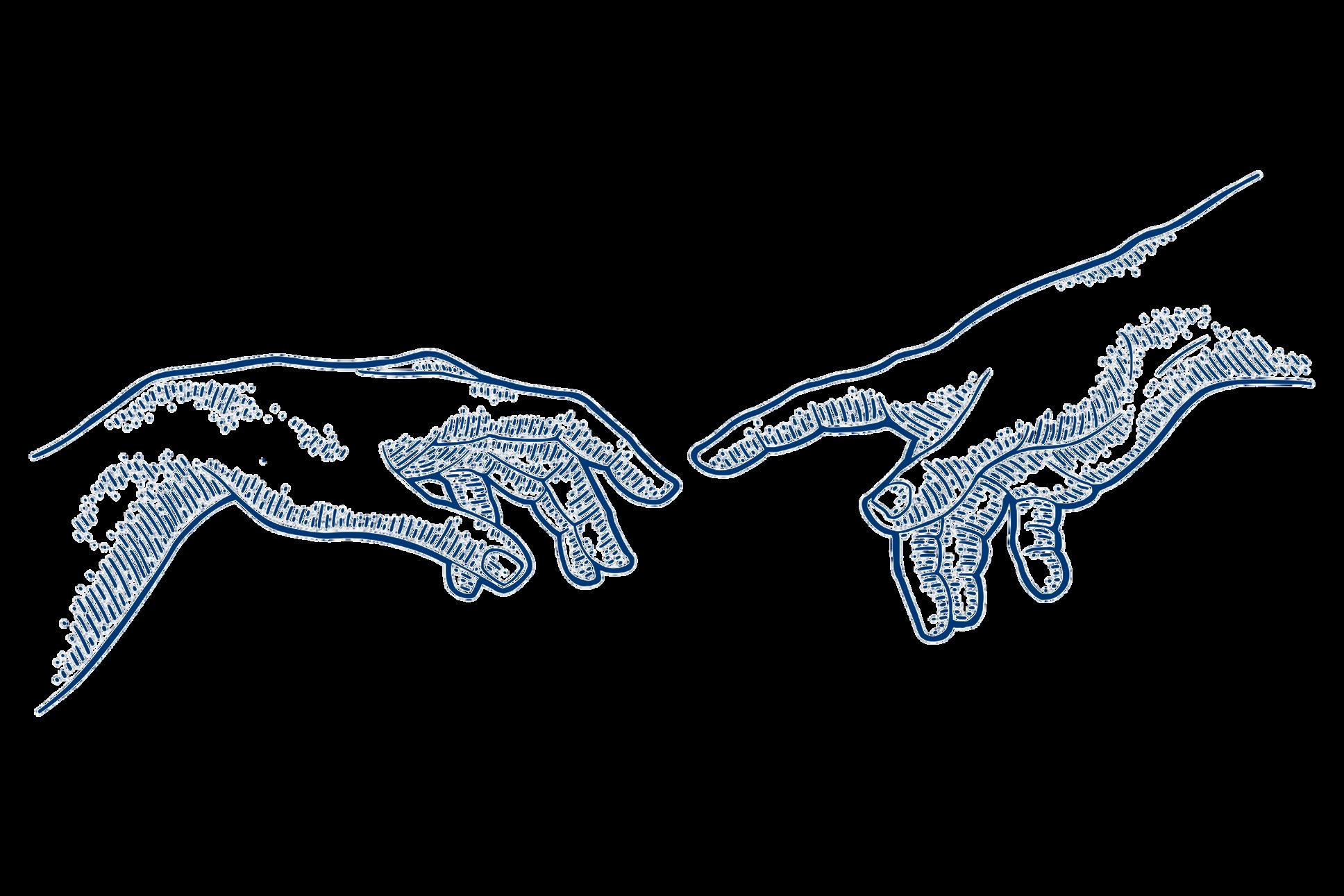





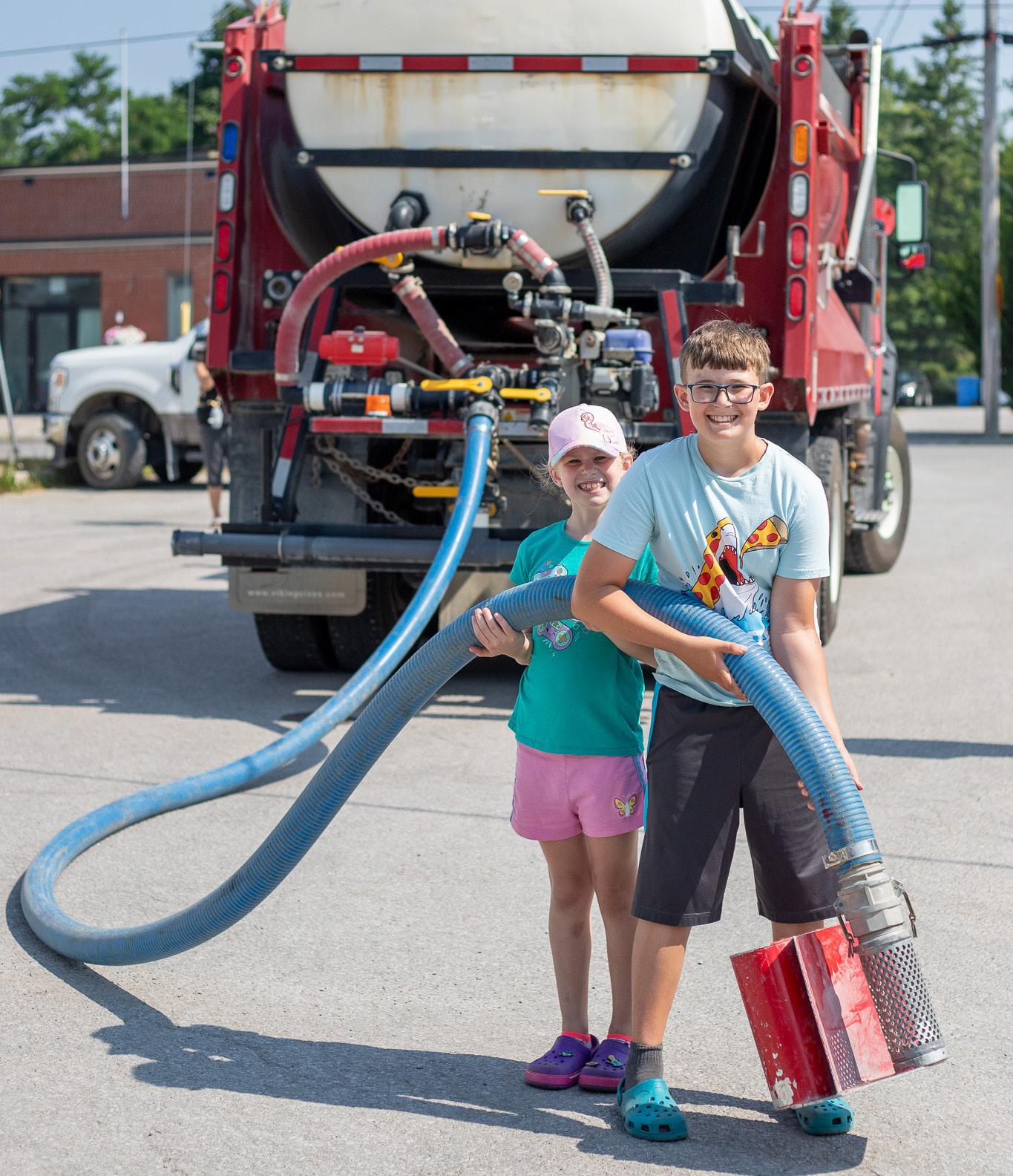


Discover Summer Fun at Kawartha Lakes Public Library!
There is still time to join the 2025 Summer Reading Club. Register at any library branch and spend your summer exploring books, collecting fun prizes, and taking part in exciting weekly programs. From cactus rock painting to polar bear cookie decorating, frog keychains, rain sticks, and our immersive ocean experience complete with wave lighting and ocean sounds there’s something new to enjoy every week.
Don’t miss special guest events, such as Touch a Truck and Turtle Guardians. You can also enter to win cool prizes throughout the summer including a suitcase for your next big adventure!
Adults can join the summer fun too! Take part in our Adult Summer Reading Challenge and “travel the world” through books. Read titles from at least four different continents for a chance to win a travel-themed gift basket. All completed entries must be submitted by Saturday, September 6, 2025. Pick up a challenge sheet at any branch!
Planning a trip to the lake? Life jackets for kids and adults are available to borrow for up to 7 days from the following branches: Bobcaygeon, Coboconk, Dalton, Fenelon Falls, Lindsay, and Norland. First come, first served, no holds.
Learn more: www.kawarthalakeslibrary.ca/lifejackets
All summer programs are free to attend. Visit www.kawarthalakeslibrary.ca for event listings, program details, and registration info.
ACROSS
1. Officials who shout "You're out!"
5. Reason your faucet gets on your nerves
9. Big Pharma product
13. Traditional dress of India
14. Helpful push from below
15. Infrequent
16. Type of acid
17. * Concerned, as Gamiing is, with the interaction of living things and their environment
19. ___ de Janeiro, Brazil
20. Coffee-shop order
21. Fishing-rod spools
22. Porches with columns
24. "___ and Her" towels
25. ___ Wynne Stadium, old home of Hamilton Tiger-Cats
26. * Tall reed in Gamiing wetlands
30. Said aloud
33. "Fee, fi, fo, ___"
34. Hockey rink
35. Husbands' partners
36. "___ the fields we go . . ." (Jingle Bells lyrics)
37. Extinct birds
39. Agricultural Technology and Advancement (central focus of City of Kawartha Lakes): Abbr.
40. Cleric's white robe
41. Ports in a storm
42. * Duck in Gamiing wetlands
45. Squirrel away some money
46. Boxing great, Muhammad ___
47. Rain a little
51. Playfully annoy someone
54. Applauds
55. Nod off
56. * Meaning of the Ojibway word 'gamiing': 3 wds.
58. Father in French
59. "Easy ___, easy go"
60. Scottish musician
61. Violent anger
62. Low bills in a billfold
63. High cards
64. Lyric poems
Joan Corrigan
By Joan Corrigan, Fun & Done Crosswords
1. Seize and take control without authority to do so
2. Nintendo's adventurous plumber
3. Earlier
4. Dog owner's attack command
5. Medic
6. Underground stems
7. The Emerald ___ (Ireland)
8. Reader's instruction to turn over the page: Abbr.
9. Least wet; least moist
10. Runners' contest
11. Russian mountain range
12. Gooey hair products
14. Lighthouse light
18. Rough, hard particles of sand
20. A cat is said to have nine
23. Sports league's youngest age group
24. Hawaiian pizza topping
26. Bitey dog
27. Personal assistant
28. Graphic symbol
29. Opposite of more
30. Did the backstroke
31. Pocket bread
32. Egg-shaped
33. Valentine's Day month, for short
36. Not young
37. Ontario past premier, Bill ___
38. Place to bake peanut butter cookies
40. Mr. Onassis, Jackie Kennedy's second husband
41. Past Prime Minister Stephen
43. Pirate punishment
44. Away from the wind, to sailors
45. Tires in the trunk
47. Skier's hillside
48. Pummel bread dough
49. Small, medium, ___
50. Fencer's swords
51. Mexican street food
52. British boys' school
53. Betty Grable movie "When
My Baby Smiles ___": 2 wds.
54. Smartly styled
57. Place for massages and facials
58. Tennis instructor




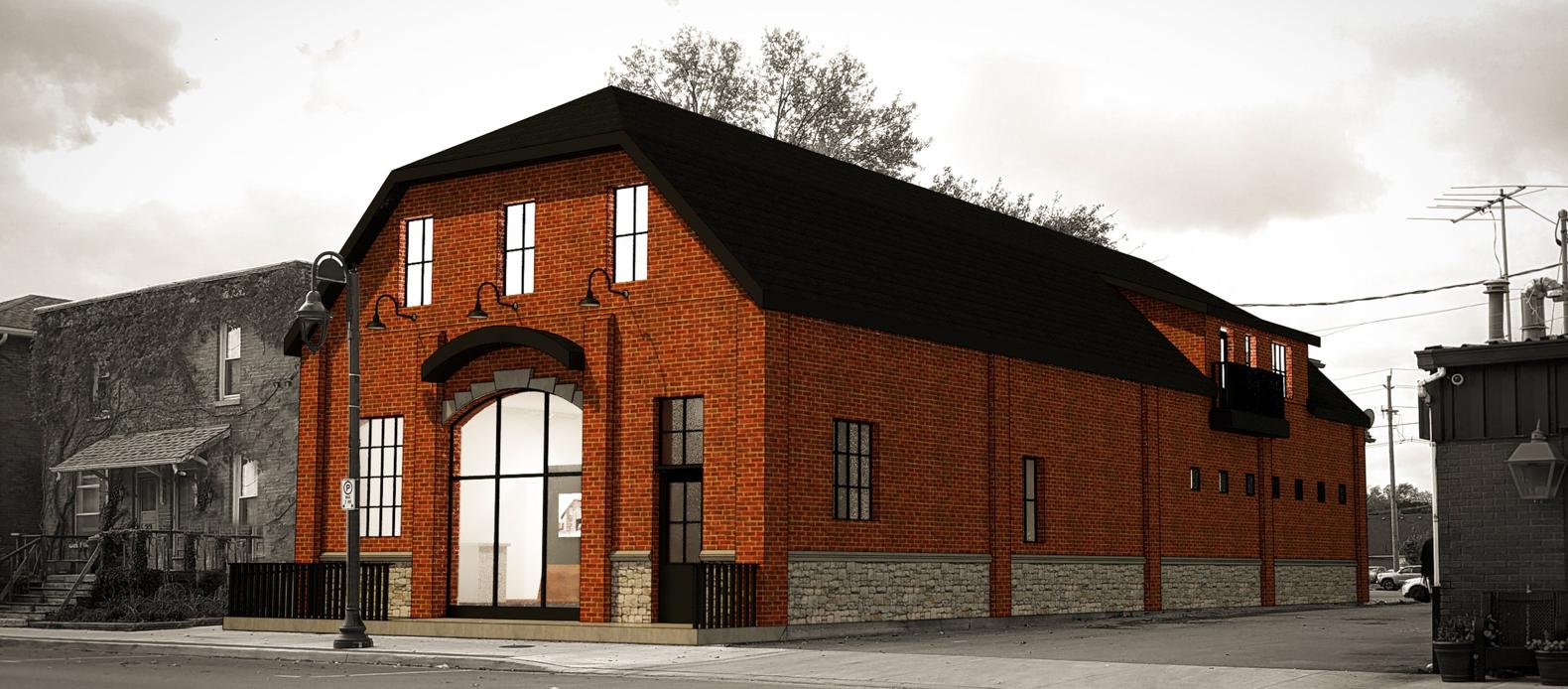










My mother-in-law didn’t throw out much of anything. She reused milk bags as freezer bags. Leftovers went to the compost pile. She once tried to send us home with decades-old toe rubbers (remember those?) that had belonged to my husband’s long-departed father.
I admire many of those efforts now. We aim to be conscientious recyclers and reuse what we can. We wash out food bags to give them second life, buy second-hand and recycle clothing. But we still fill our Blue Box and clear garbage bag every week.
Despite the best efforts of Ontario’s municipalities to divert waste, available landfill space is rapidly shrinking. And that’s despite shipping one third of our garbage to the U.S.
The Auditor-General’s 2023 report warned Ontario had about 13 years of space left. Lindsay Ops, the largest of Kawartha Lakes’ five landfills, currently has about six years of life.
A decade ago, Ontario passed the Resource Recovery and Circular Economy Act. Instead of ending up in the dump, the goal was to reuse or transform materials into other products. Beer bottles were already being refilled. Aluminum cans were used to make more cans. Tires were being recycled. But the Auditor General said our current government had done little to expand those efforts.
rates. Instead of 2026, producers have until 2031 to meet recovery goals for paper, glass, metal, plastic and beverage containers. The proposed changes also remove the requirement to collect from locations like apartment buildings and retirement homes. All these changes mean more waste in our landfills.
We have an effective deposit-return system for alcohol beverage containers – with an over 80 percent return rate. In contrast, the Blue Box system captures less than half of used juice and water containers and the like. After looking at extending the deposit-return system to all beverage containers, as most other provinces have done, the Ontario government nixed the idea last year thanks to lobbying by large grocery chains.
For some areas, it’s becoming harder to recycle even alcohol bottles. Dozens of Beer Stores (Ontario’s “recycling depots”) have been shuttered since Ford allowed grocery stores and corner stores to sell booze. Fortunately, all major grocers will have to refund those empties beginning this January.
In recent years the city has increased efforts to extend the life of our landfills. We now have curbside pick-up of food waste in four urban centres, a large plastics recycling program and textiles recycling, among other efforts. The plan is to divert even more waste from landfills by recycling items like agricultural plastics, boat wrap, and rural food waste.
The act introduced “extended producer responsibility” –making packaging producers responsible for collecting it. The transition to industry take-over of the Blue Box program should be complete by January. Ideally, it would lighten the burden on local governments and provide incentive for producers to reduce unnecessary packaging. Unfortunately, the province recently introduced significant changes to Blue Box regulations that would delay key recycling LA
We can help by contacting Ontario’s finance minister (peter.bethlenfalvyco@pc.ola.org) in support of a deposit-return program for all beverage containers; refusing, reusing or repairing what we can; and washing out recyclable containers to keep them out of the dump. We can also sell or donate unwanted stuff.
You never know. Maybe someone out there would want a pair of toe rubbers.


Seven years ago in these pages, I described a Civic Holiday excursion to Haliburton that was organized in 1931 under the auspices of the Lindsay Rotary Club. That event, which attracted more than 400 people, was just one in a long line of large local picnics that made the news in tantalizing detail.
“The history of picnics is essentially the history of humankind,” notes culinary historian Lindy Mechefske in her 2021 book, Ontario Picnics: A Century of Dining Outdoors. “We began by eating outside. We have, in a sense, been picnicking forever.” Still, a combination of factors – including transportation technology such as passenger rail service, and the cultural prominence of churches and civic organizations – ensured that picnics would enjoy something of a heyday in the 20th century.
Foremost among these were the picnics organized by local churches, either for their Sunday schools or for the congregation at large. Often one of the Trent Valley Navigation Co. steamboats would be chartered to ferry throngs of picnickers up to the shores of Balsam, Sturgeon, or Pigeon Lakes; in other cases, a nearby grove or park would suffice for the festivities.
Such was the case for the community of Bethel (located northeast of Omemee) in June of 1909, when parishioners at its Methodist church assembled just west of the building for a picnic that saw the young and young-at-heart flitting about, playing catch, enjoying a set of swings, and in-
dulging in ice cream. “About four o’clock, supper commenced. And such suppers!” gushed a participant who described the day for the Watchman-Warder newspaper. “Why, if we had not had to sit on the grass we would have imagined we were dining at the King Edward Hotel in Toronto.”
Nearly 40 years after that event, the various Protestant churches in Lindsay teamed up to plan an enormous picnicking jaunt to Orillia. On June 29, 1948, the Canadian National Railway coupled nine coaches to one of its steam locomotives and highballed towards Couchiching Beach Park for a picnic that reportedly attracted over 900 people. These “picnic specials” ran for a few years and would usually leave Lindsay at 10:15 a.m., returning to town by 6:30 in the evening. Fares for the 1950 excursion were priced at $1.55 for adults and 80¢ for children. “The different churches would organize races and games after their picnic lunch, and we had a great time,” recalled the late James Mackey in a 2019 interview. “For many of us, it was our first and only trip on a train.”
Perhaps the most famous examples of church-run picnics in what is now Kawartha Lakes were those organized by Knox Presbyterian Church in Glenarm. They began around 1885 and within 30 years were a going concern; over 1,500 people from across the county were said to have attended the picnic in 1908. Generous helpings of potato salad and ham were the order of the day, and it was not uncommon for the ladies of Knox to bake up to a dozen pies each for these events.


Picnics were also organized by political parties and industrial concerns. The United Farmers of Ontario, which enjoyed considerable influence in provincial politics during the early 1920s, held a picnic at Birch Point in Fenelon Township on July 30, 1924. A procession of buggies and cars brought men, women, and children to the grounds where they opened their picnic baskets as games of baseball got underway nearby. This monster picnic was in part meant to rally U.F.O. supporters throughout Victoria County in the face of devastating election losses the year before.
Fostering goodwill among the rank-and-file, whether they be supporters of a political movement or workers in a factory, had long been part of the picnic tradition in this part of Ontario and elsewhere. The Horn Bros. woollen mill, once one of Lindsay’s leading employers, welcomed its staff to a company picnic at Miners’ Bay in the early summer of 1950 – the first such picnic the firm had organized since the end of the Second World War. Kids received a pair of free tickets with which they could redeem for pop or an ice cream cone, while their parents milled about with other employees before lunch got underway. “Noon saw tablecloths and blankets spread out on the grass and people gathered in groups to settle down to that ever pleasant task of eating,” the Lindsay Daily Post reported. “The air was laden with the scent of baked beans, salads, onions, chicken sandwiches, coffee and what have you.”
Fenelon Falls’ Milburn Kelly attends a picnic at an unidentified location in the early 1920s. Maryboro Lodge: The Fenelon Museum collection.
Tablecloths and blankets continue to be spread out on the grass to this day – whether at Garnet Graham Park in Fenelon Falls or at Victoria Park in Lindsay, among other places. Still others make use of the many picnic shelters that grace our municipal green spaces. While declining Sunday school attendance has largely rendered the church picnic a thing of the past, and extended essays about company picnics in the local press now seem quaint, there can be no question that this tradition remains very much alive. “All picnics have one thing in common,” writes Mechefske, the culinary historian: “that critical, fundamental, all-important connection between land, food, and people.”
So with that in mind, will you please pass me the potato salad? I’m getting hungry. LA
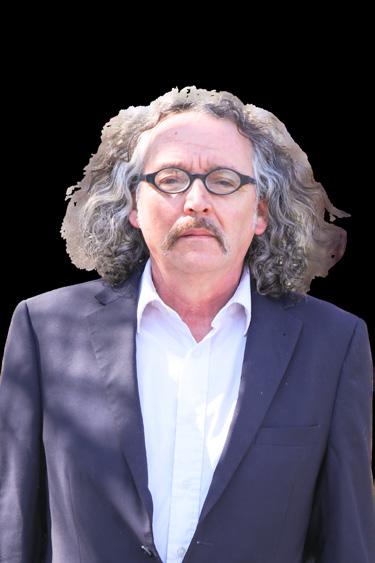
I can’t believe it’s already August. There’s only a month left of ‘real’ summer. Worse still, this leaves only a couple months, weather depending, of my favourite time of year: construction season.
It’s possible that I am in the minority here, but I capital L love construction season. I predict that in a decade or two, I’ll be spending my days on my umbrella-equipped scooter, just watching orange-clad, helmeted crews do their thing.
And if you want, you can wear an imaginary white hat and ponder improvements to the process, while holding a virtual coffee, watching others work.
I think I’ve always been this way. Even as a young boy I was fascinated by construction sites and would watch the dance of people and machinery, accomplishing what seemed supernatural to me. When I moved to Toronto for school, I got to see next-level sites. Down there, they fence off the big projects with just small chain-linked windows to peer down at the start of construction, several stories below ground level.
There might be a few of my former managers from my time in the construction industry who could attest to the fact that I like to watch the work. In my defence, I did say in my interviews that ‘I love construction.’ It is possible, however, that I left out the ‘I could watch it all day’ part. My bad, as my kids say.
By Trevor Hutchinson Contributing Editor
Beyond the ‘how it’s made’ wonder, there are so many ways to enjoy this most glorious time of the year. One of my favourite ways is to use the local message boards to play ‘complainers bingo.’ It’s a pretty easy game. You make a board with the standard complaints and mark them off as they pop up on the Facebook machine: ‘it’s loud’; ‘it’s dusty’; ‘why is taking solong (after a week of weather-related delays); and the go-to of the complainer, ‘the city of Kawartha Mistakes.’ It’s a game that can be played all year. I give myself bonus points when I spot someone who complains about road construction in the summer and potholes in the spring.
And if you want, you can wear an imaginary white hat and ponder improvements to the process, while holding a virtual coffee, watching others work. I did this last month with a recent detour of Lindsay Street North. The diverted northbound traffic was sent to William Street. It had to go somewhere but planners might have forgotten that the William and Wellington Street lights are brutal on a good day. I swear I could read War and Peace while waiting for a green there in normal traffic situations. Could the lights have been reprogrammed to handle the extra traffic from the detour? Probably. But I’m not a traffic engineer. I just play one on TV. I wish everyone a happy summer. And I encourage everyone to take a second, or an hour, breathe in the sweet diesel fumes and dust and watch the wonder of our tax dollars at work.




SERVICES
Collector Car & Truck Appraisals
MTO Appraisals & Vehicle, VIN/Ownership Corrections. Call Ron @ 705-8782372 Please visit RJVintageGarage com Available - Lindsay & Area
Fences, Gates, Railings & Verandas
New wooden fence installation Wooden fence repairs & staining Perfect post holes Great quality, pricing & reliability Stephen 647-927-1580
Better Bins
Reliable Moving Solutions to take the Stress out of
Packing
Plastic Moving Bins. We Deliver. 705-879-2569 betterbinrentals @outlook.com
To place an ad in Marketplace, email Rebekah at rebekah@lindsayadvocate.ca
Wanted Antiques
Furniture, signs, jewellery, watches, coins, china, military items, paintings, records, books, old metal toys, wood decoys, snow shoes, paddles & more.
Bob Carruth 705-887-1672
We Buy Vintage... Vinyl Records, Comics, Jewellery, Glass, China, Pottery, Toys, Sports & Collectibles. We Make House Calls. Cash Paid. Robert & Penny. 705-324-2699 howlingdog rocks
Classic & Vintage Cars & Trucks Call Mark 613-360-2699
For Rent - 1 and 2 bed units from $1,800 & up Heat, hydro & water is included Adult building in Lindsay Call 705324-9381
Burns’ Snow Removal & Lawn Care Ltd.Grass cutting, fertilizing, trimming, organic topsoil & spring cleanup Commercial & Residential Fully insured Call David E Burns 705-324-8154
McKenzie’s offers all aspects of outdoor maintenance interlock lift and re level fencing gutter cleaning lawncare snow removal 705-934-4333 Free estimates



Heather Cole
On the 23rd of July 2022, When Jesus called you home, my world was destroyed. My heart is and forever will be broken without you. You will always be the only woman for me. I love you Heather Cole. One day we are going to be together, forever in heaven. Rest in peace my beautiful girl. From the man that loves you, Ben Serhan.
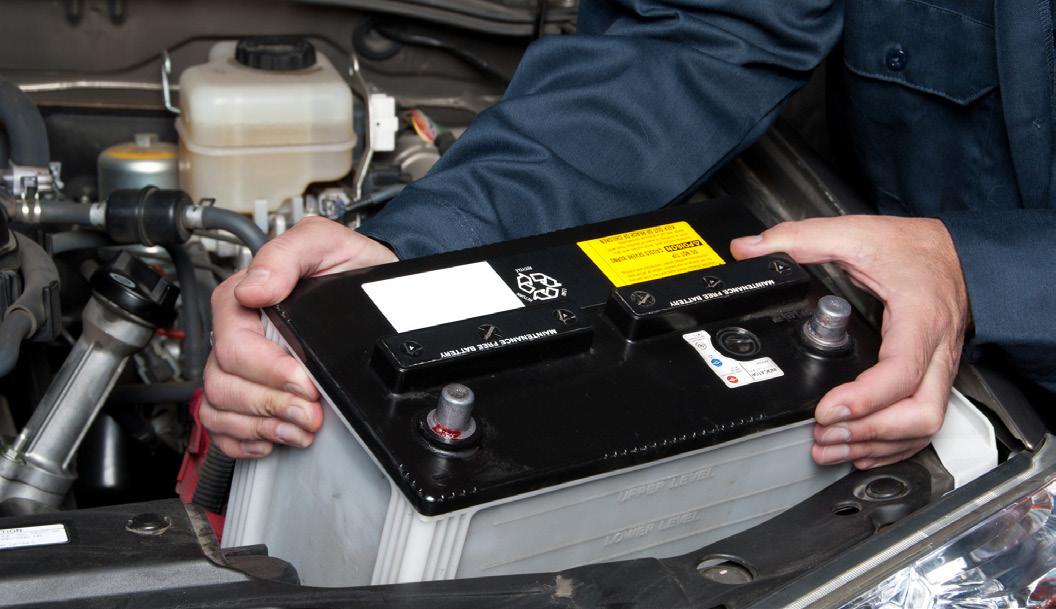
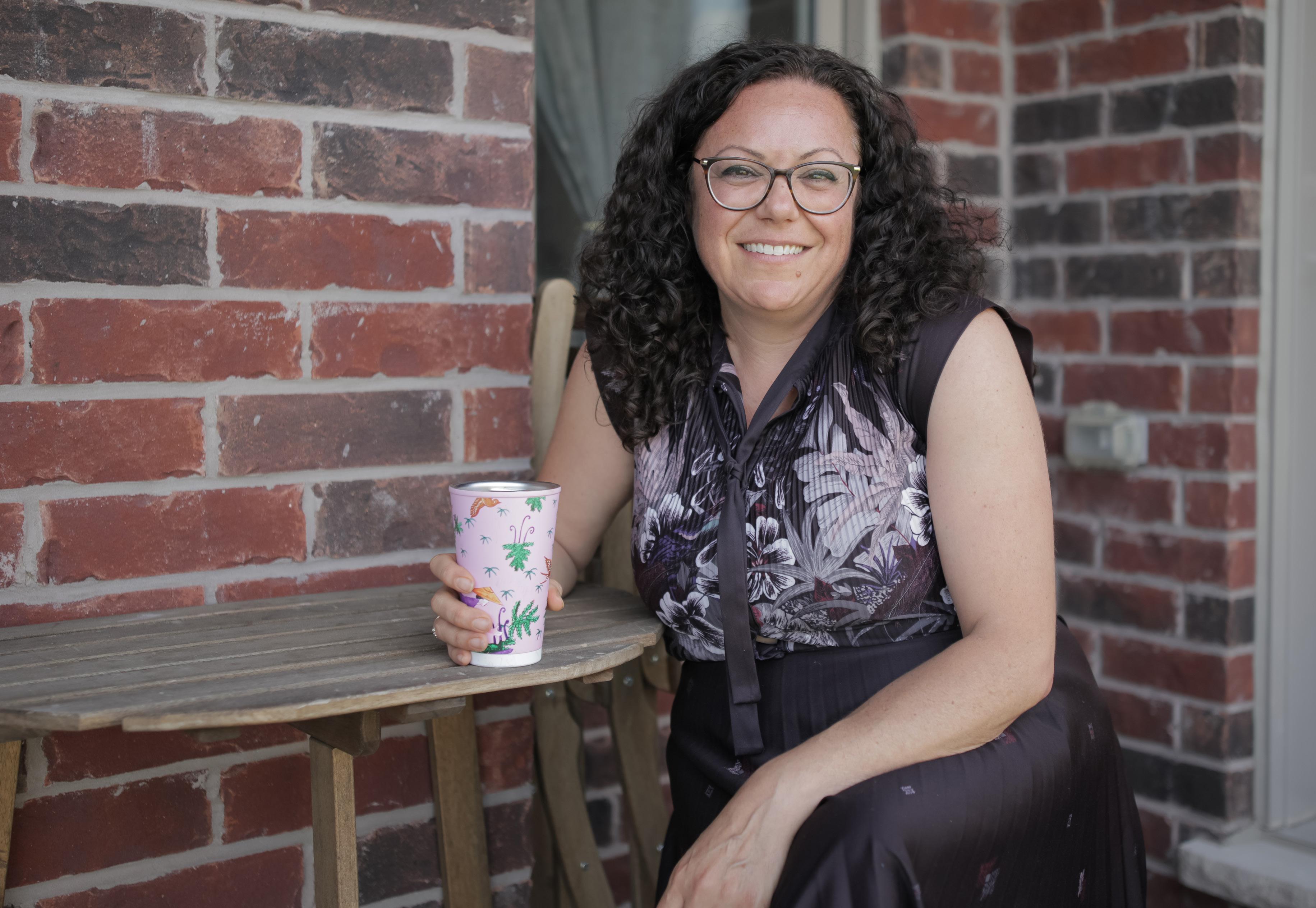
ANGELA NADIA DE CARO moved to Lindsay from Richmond Hill in March 2024.
Lindsay Advocate: Why did you choose to move here?
ANGELA NADIA DE CARO: I loved the house, loved the community, wanted less busy lifestyle and more space.
Lindsay Advocate: What is your favourite thing about Kawartha Lakes so far?
ANGELA NADIA DE CARO: The water, lakes, ponds, sunsets, walking trails, and people.
Lindsay Advocate: What are your favourite local restaurants or shops?
Are you new in town? If you moved to Kawartha Lakes within the past two years and want to be featured here, email us at info@lindsayadvocate.ca.
ANGELA NADIA DE CARO: I love to cook so we do not go out often, but I enjoyed eating at the locks (again got to see the water) I also enjoy shopping at the local superstore and giant tiger as I can walk there and enjoy speaking to the store clerks. I also found several “treasures” for my new house from the Restore and Mission Thrift store in town. Also am very grateful for Acupuncture Works as they helped/encouraged my daughter to do a half marathon.
Lindsay Advocate: How were you involved in your previous community and how might you like to get involved in Kawartha Lakes?
ANGELA NADIA DE CARO: In my previous community I lead several kids camps and programs. I volunteered at the Canada Day celebrations and spoke at several engagements including inter-faith symposiums etc. Currently I am looking into becoming a volunteer at the pregnancy centre in town and helping with kids program and being a volunteer barista at Trentside Baptist Church.
